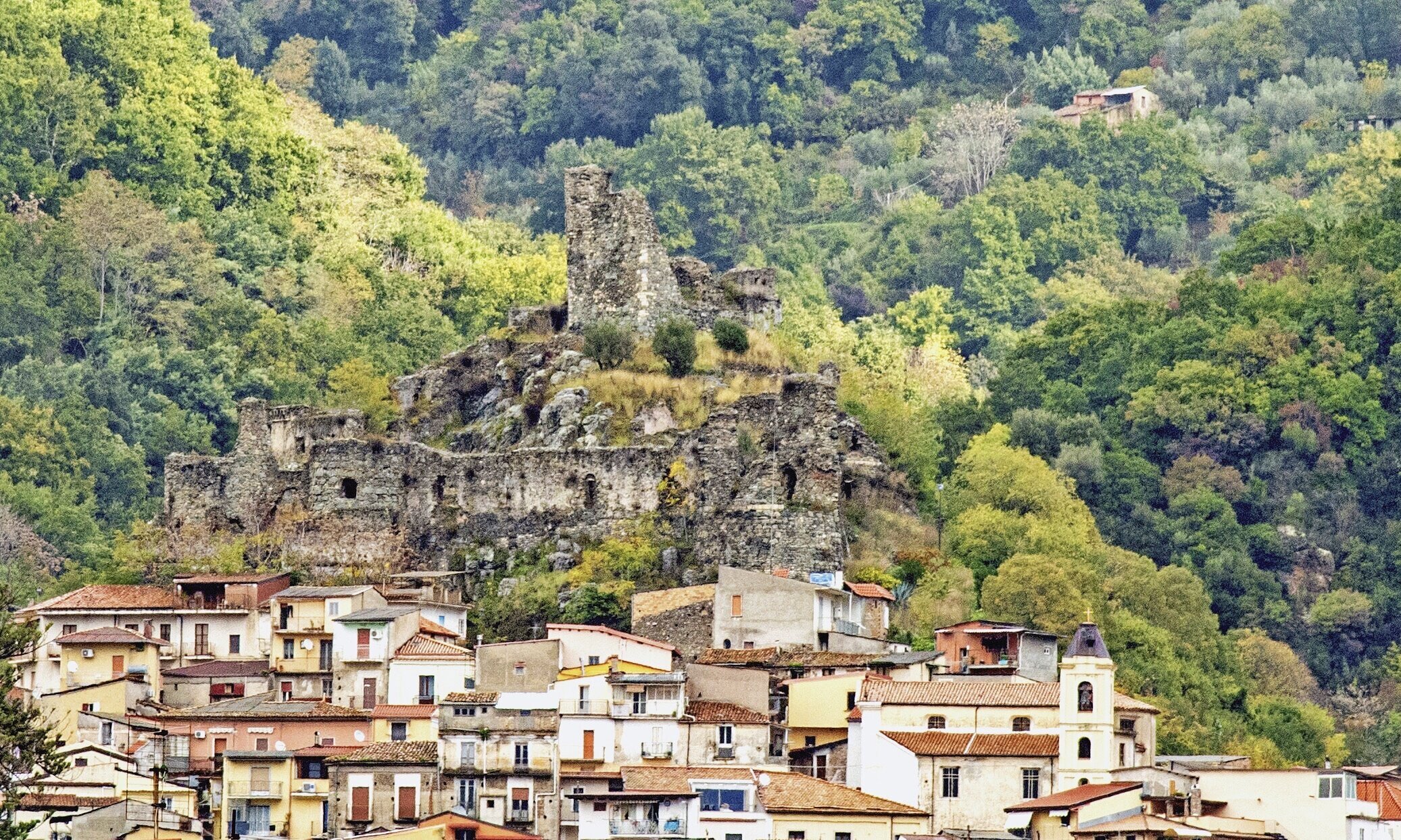
My maternal grandparents were born in Nicastro, a 9th century town founded when Calabria was part of the Byzantine Empire and with a Norman Castle built in late 11th to early 12th century,.
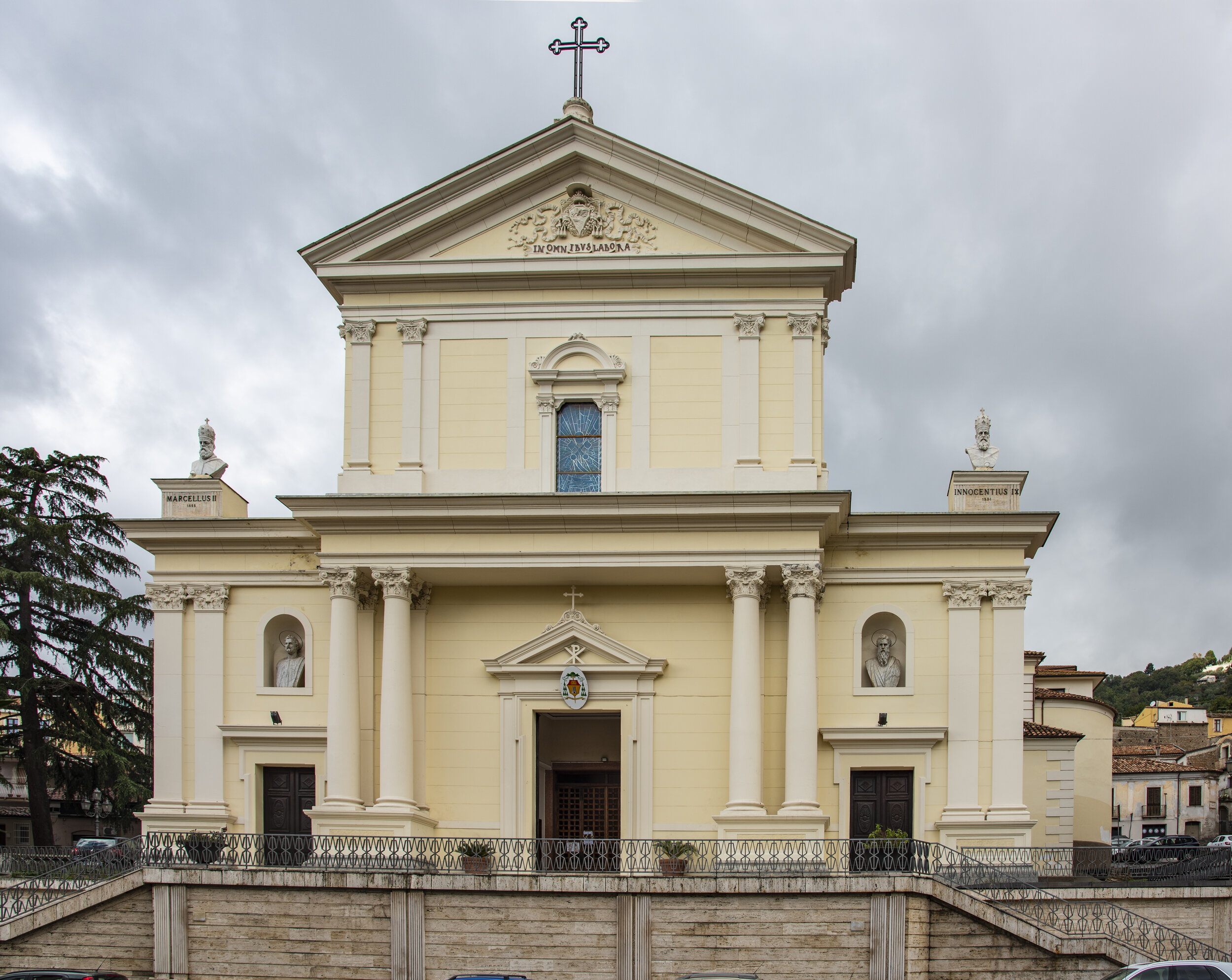
The Roman Catholic cathedral dedicated to Saints Peter and Paul in the town of Nicastro, now part of the city of Lamezia Terme, in the province of Catanzaro, in the Calabria region of southern Italy.

On the façade of Saints Peter and Paul Duomo are busts of popes Marcello II (1539-40) and Innocent IX (1560-75), who were bishops of Nicastro.

The first church on the site probably dated from the Byzantine era, and was destroyed during Saracen raids prior to the year 1000. The Normans in 1094 erected a church following Latin rites.
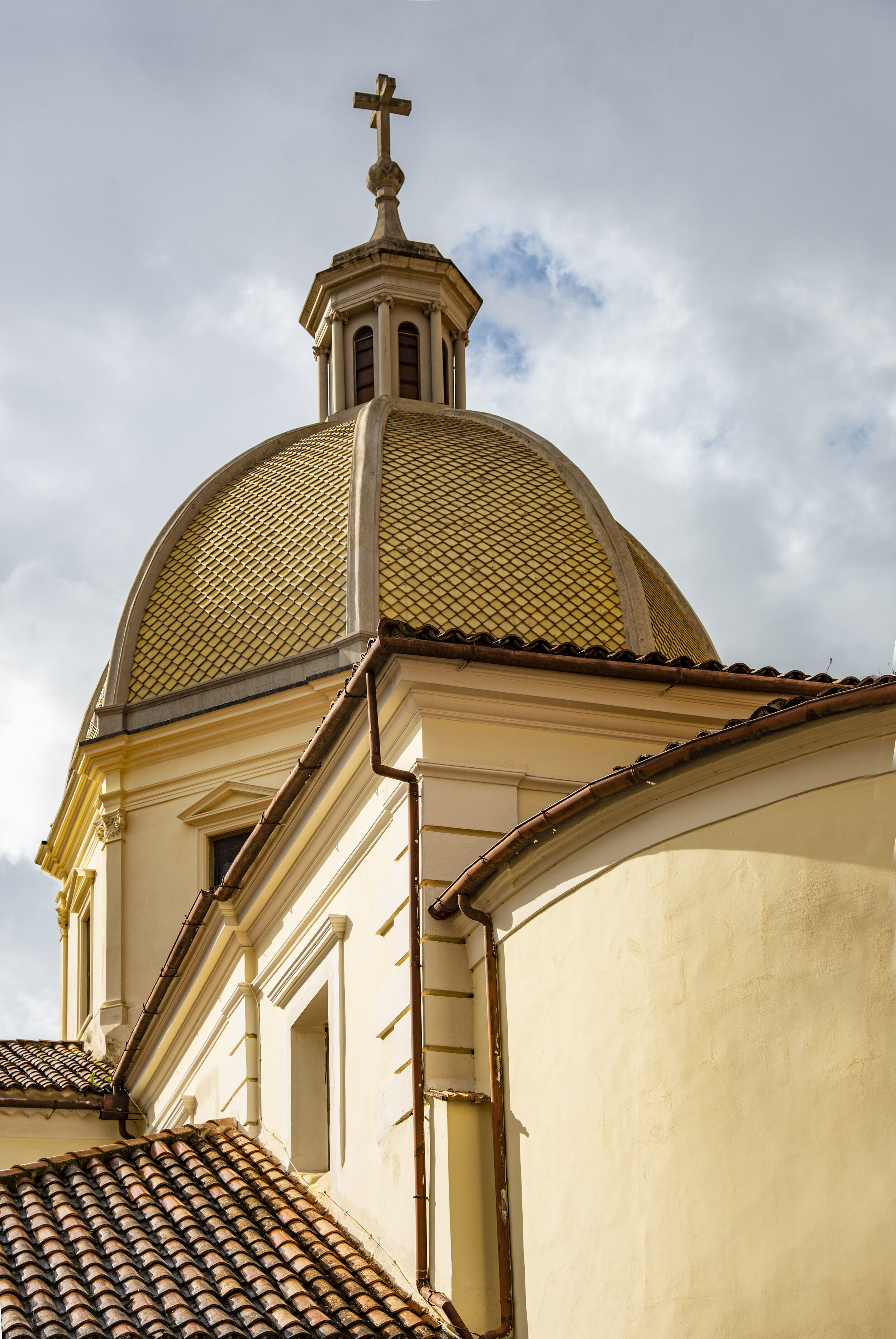
This cathedral was destroyed by an earthquake on March 7, 1683. A new cathedral was raised from the ruins and completed in 1675. The façade was redone in 1925 in a Neoclassical style.

Interior of dome in Saints Peter and Paul Duomo, Nicastro. The cupola was completed in 1935.
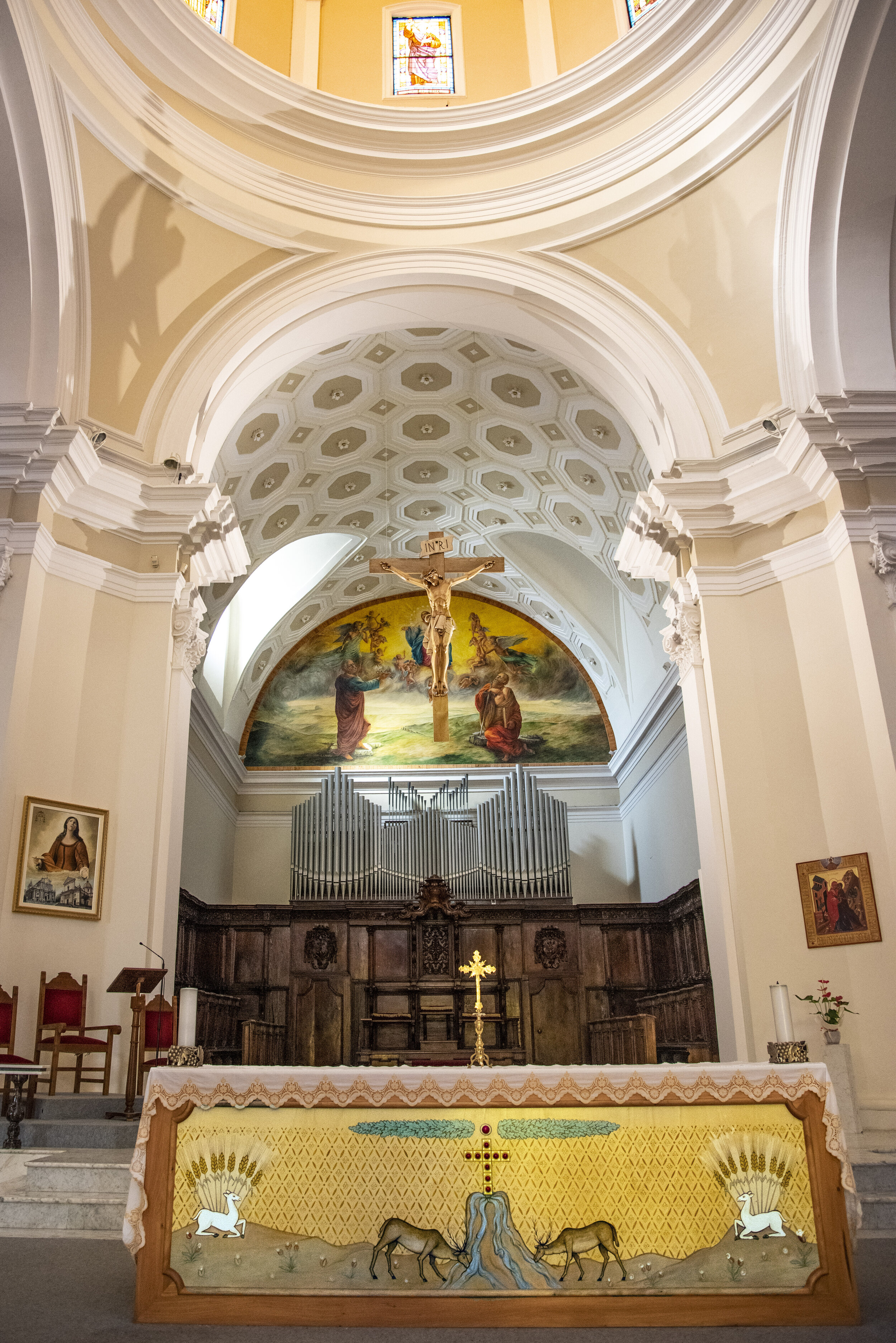
Saint Peter and Paul Duomo altar - decorated with stags, representing the soul's desire for purification through Baptism & the Holy Eucharist, drinking the water of life (God's word) from a stream.

Altar tympanum with picture of St,. Peter holding the keys to the kingdom of heaven and St. Paul with a book representing his epistles and a sword referring to his being decapitated outside of Rome.
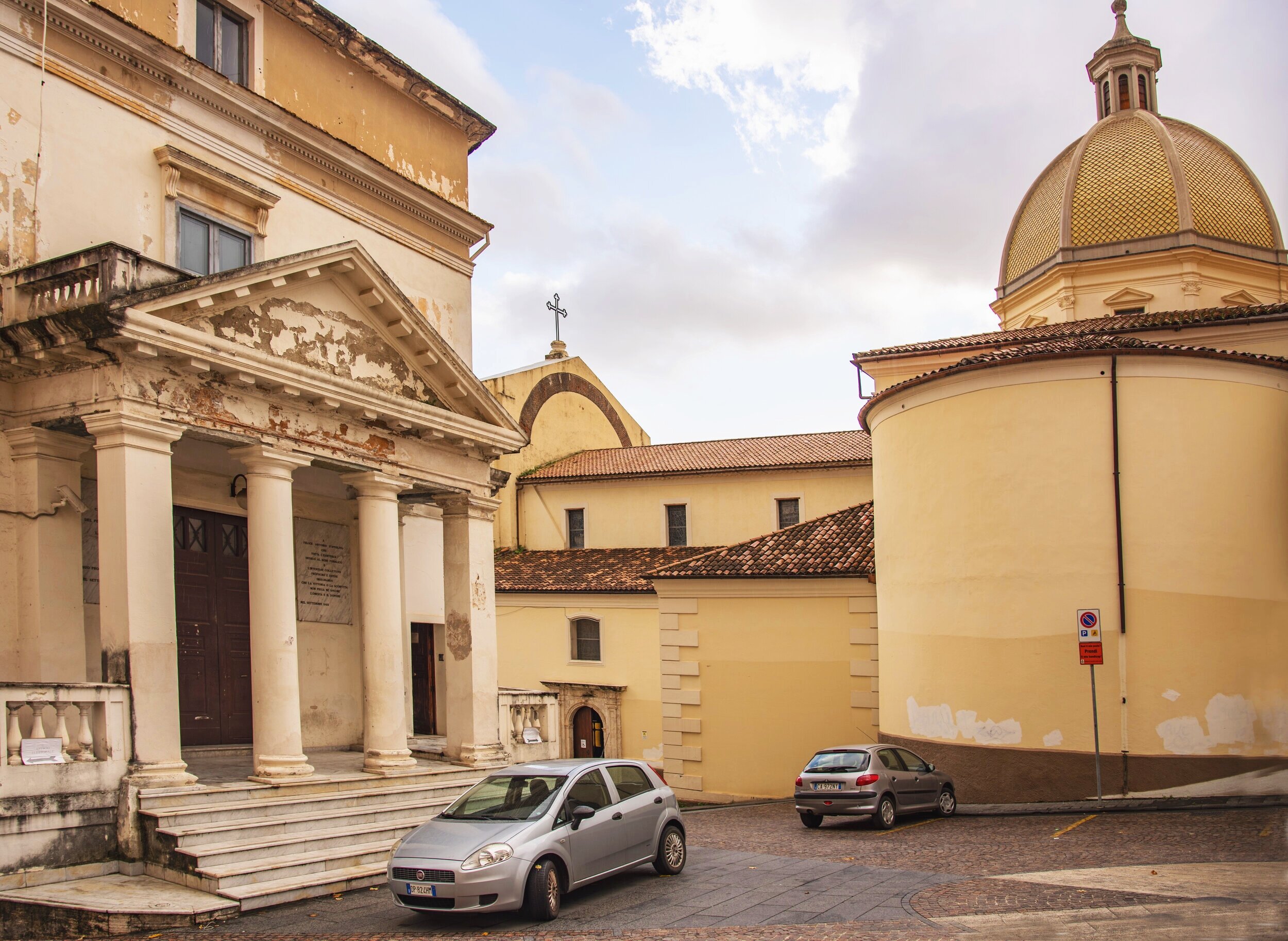
A colonnade of four columns supports a pediment at entrance of Nicastro City Hall, which is adjacent to the Duomo, where we went to find the birth recordings of my mother's parents.

Louise inside the House of the Commune (City Hall) for Nicastro.
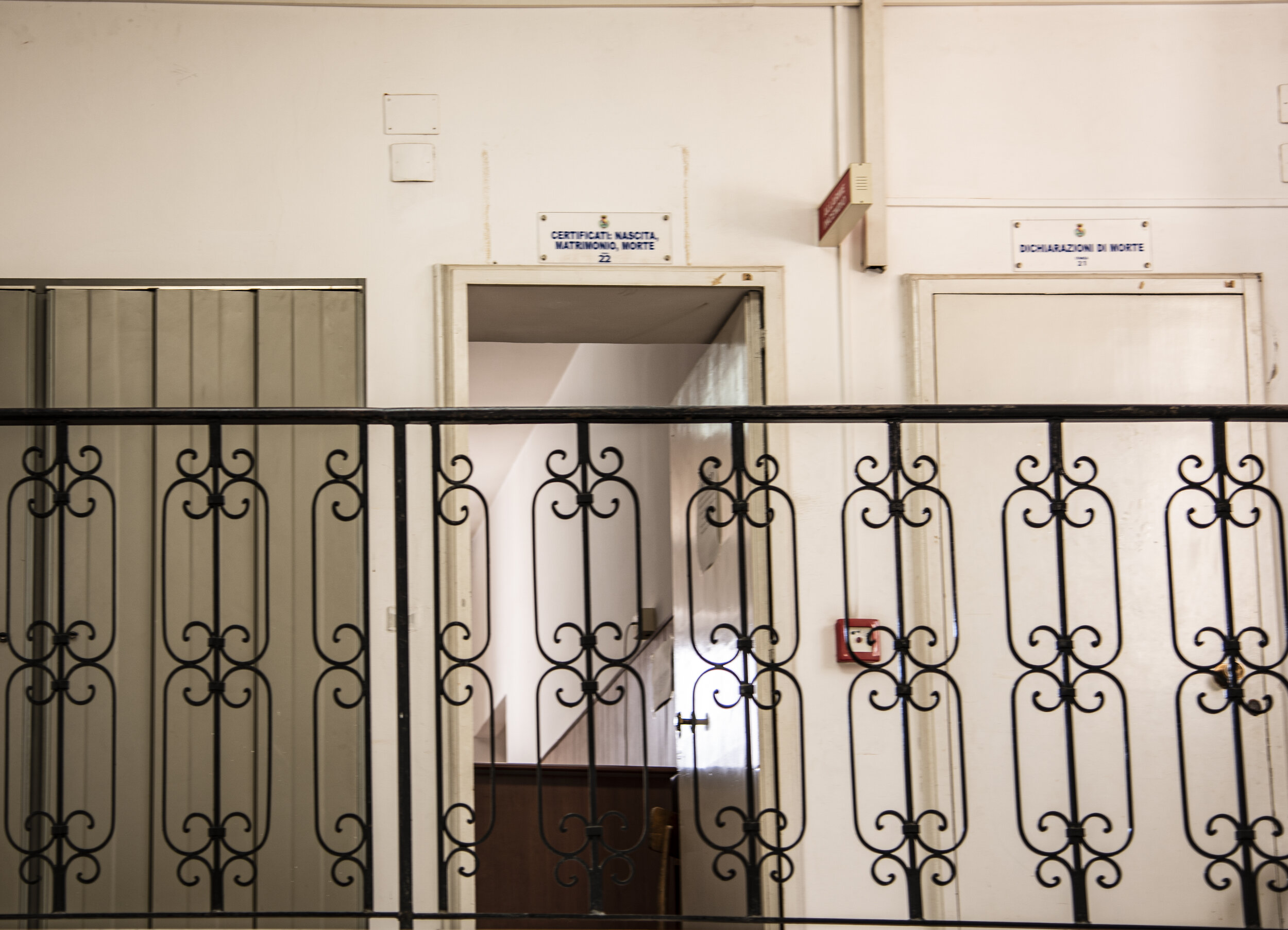
Room 22: Office for certificates of birth, matrimonial, and death. Today, as in times past, people walk into the office with a witness and record their event..
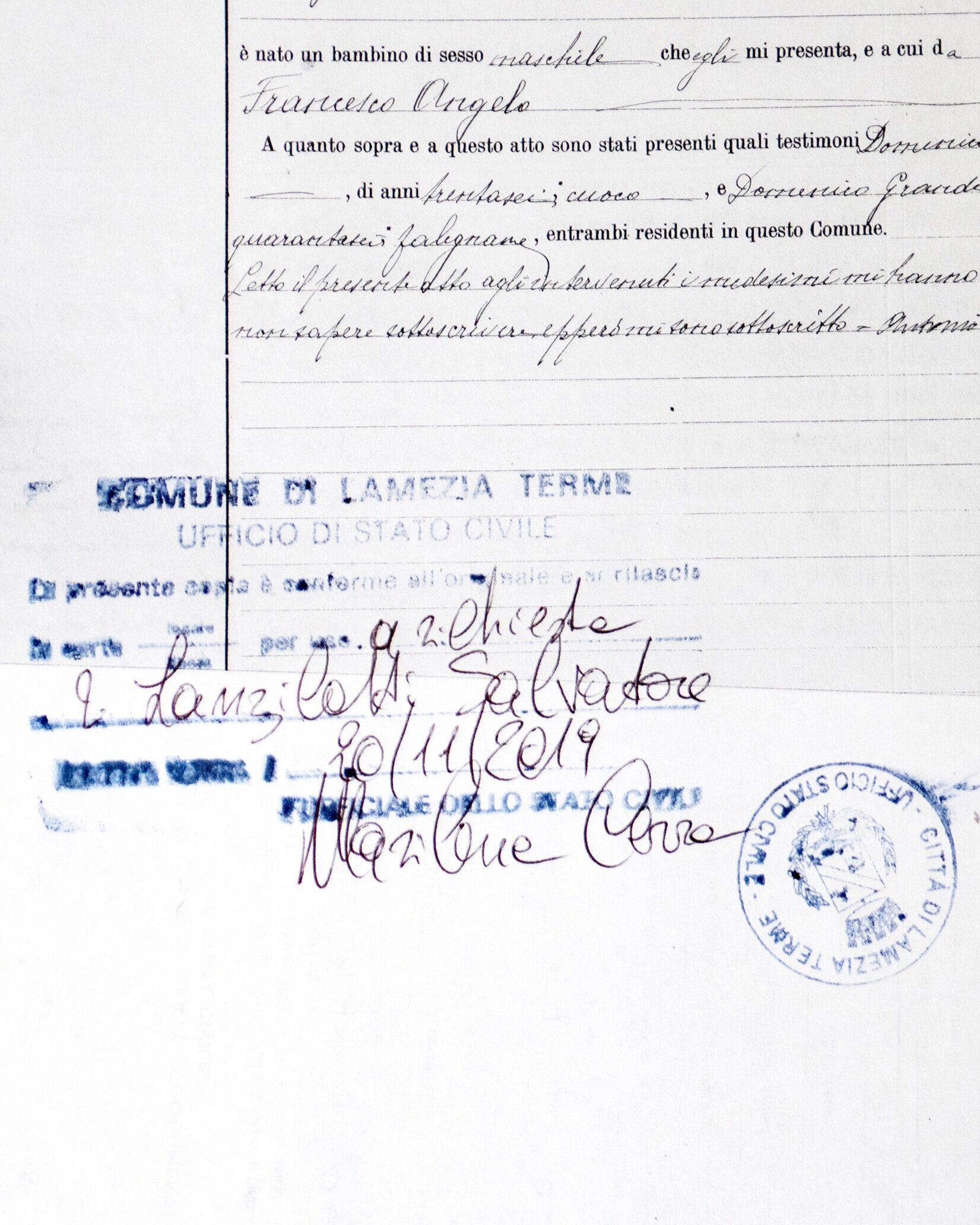
Detail of the Official Form documenting "ACTS OF BIRTH" copied from a record made in 1885 of the birth of my mother's father.
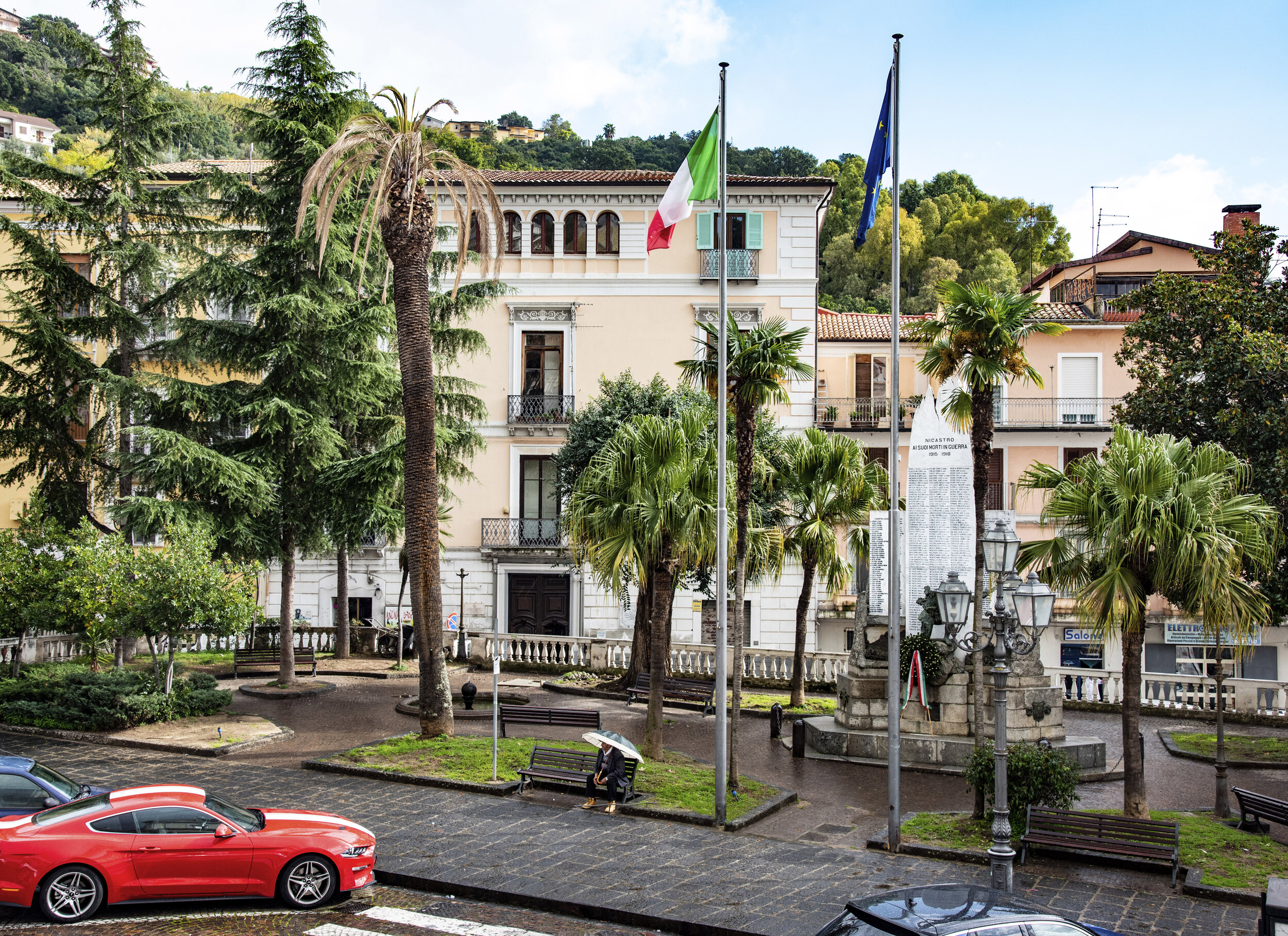
Directly across from the Duomo is the monument to the dead and missing from Nicastro in World Wars I and II.
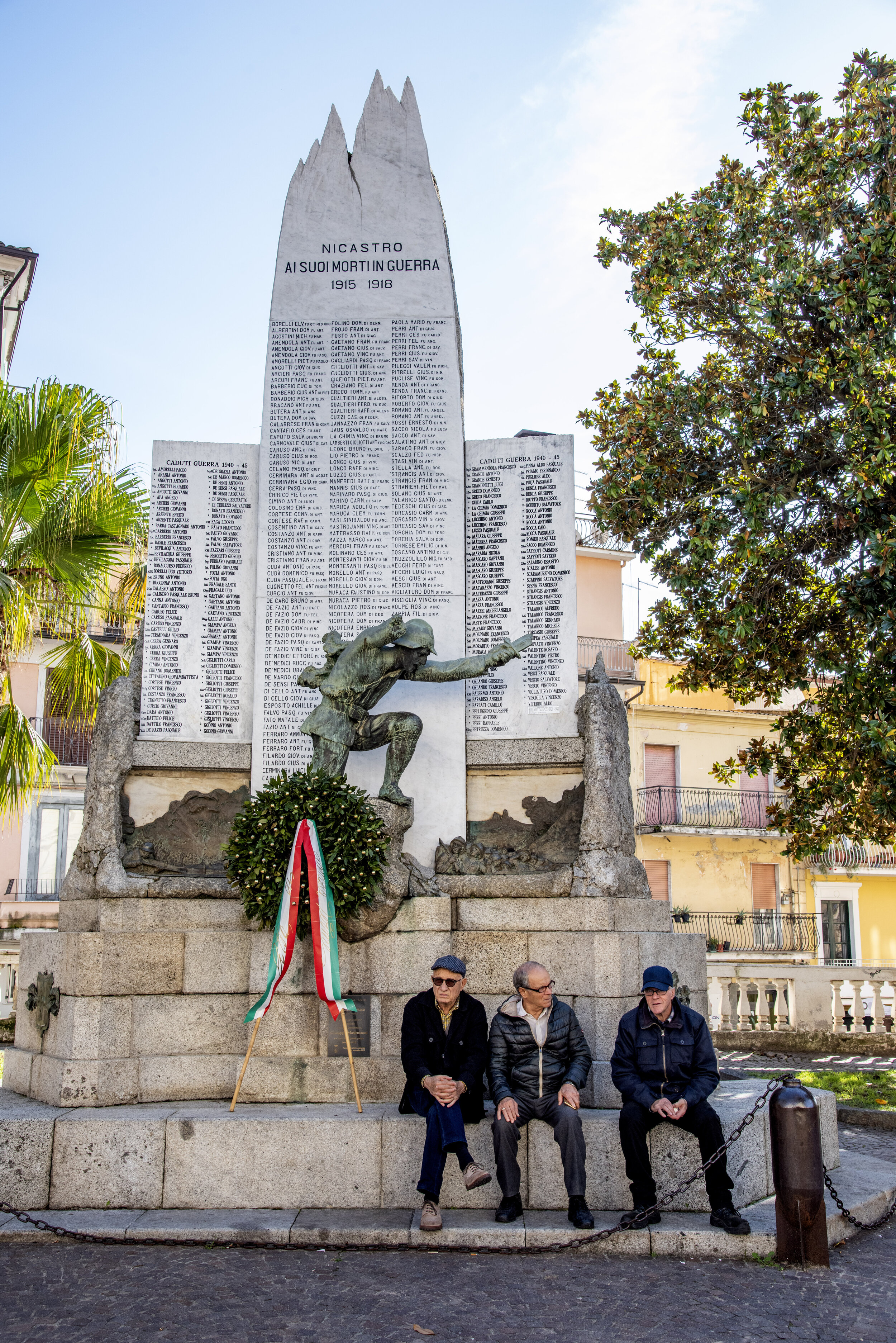
We visited the memorial and were surprised to find three members of my mother's family and four from my father's family listed as dead from WW I and WWII.
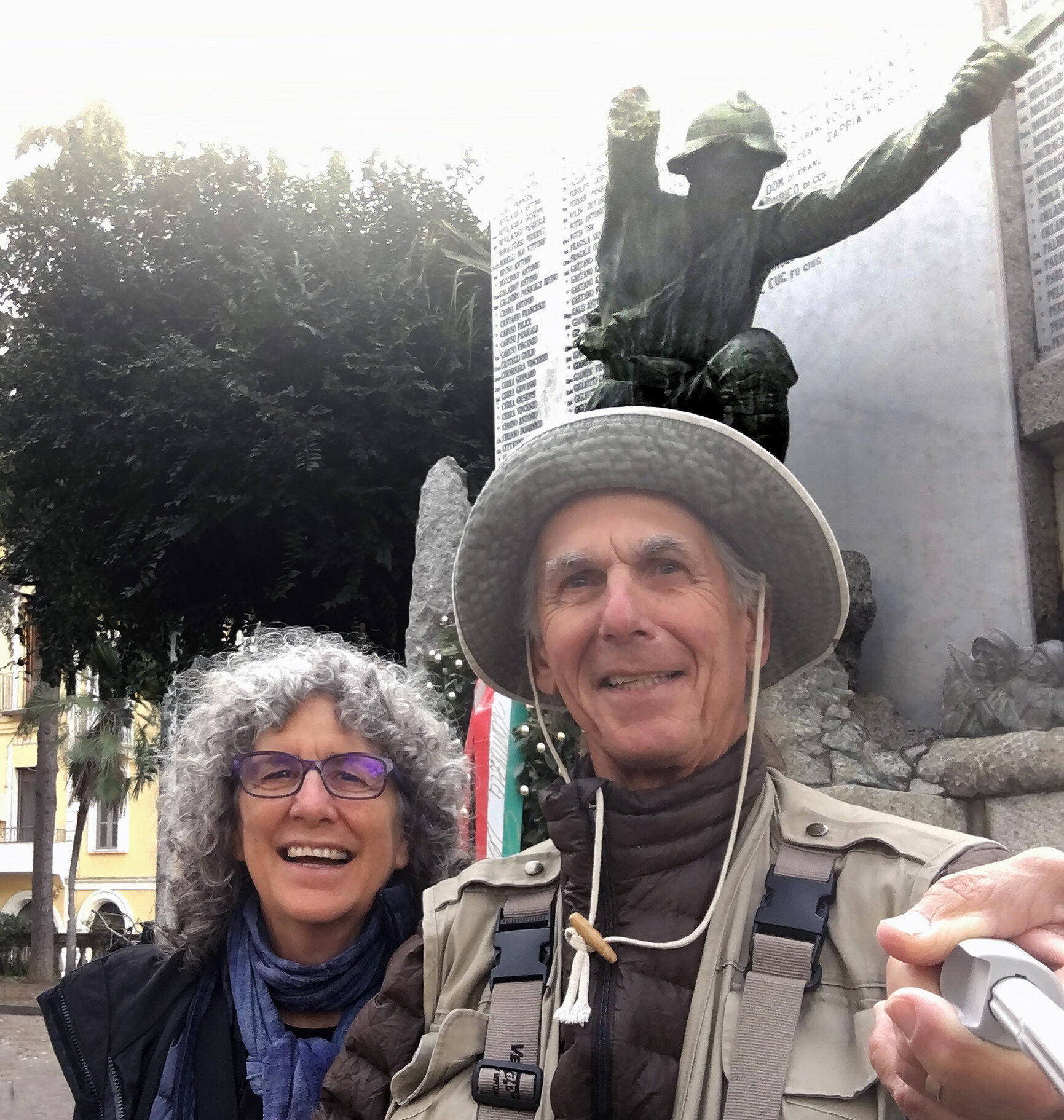
I must admit I felt some pride and a sense of belonging as my distant relatives were listed publicly as having given their lives for the country.

As we were taking photos at the memorial this Italian couple stopped to talk to us in English about the monument.

The people at the Nicastro City Hall could not find any records of my mother's mother and suggested we try the local churches. We started at Chiesa SanNicola/Santa Lucia.
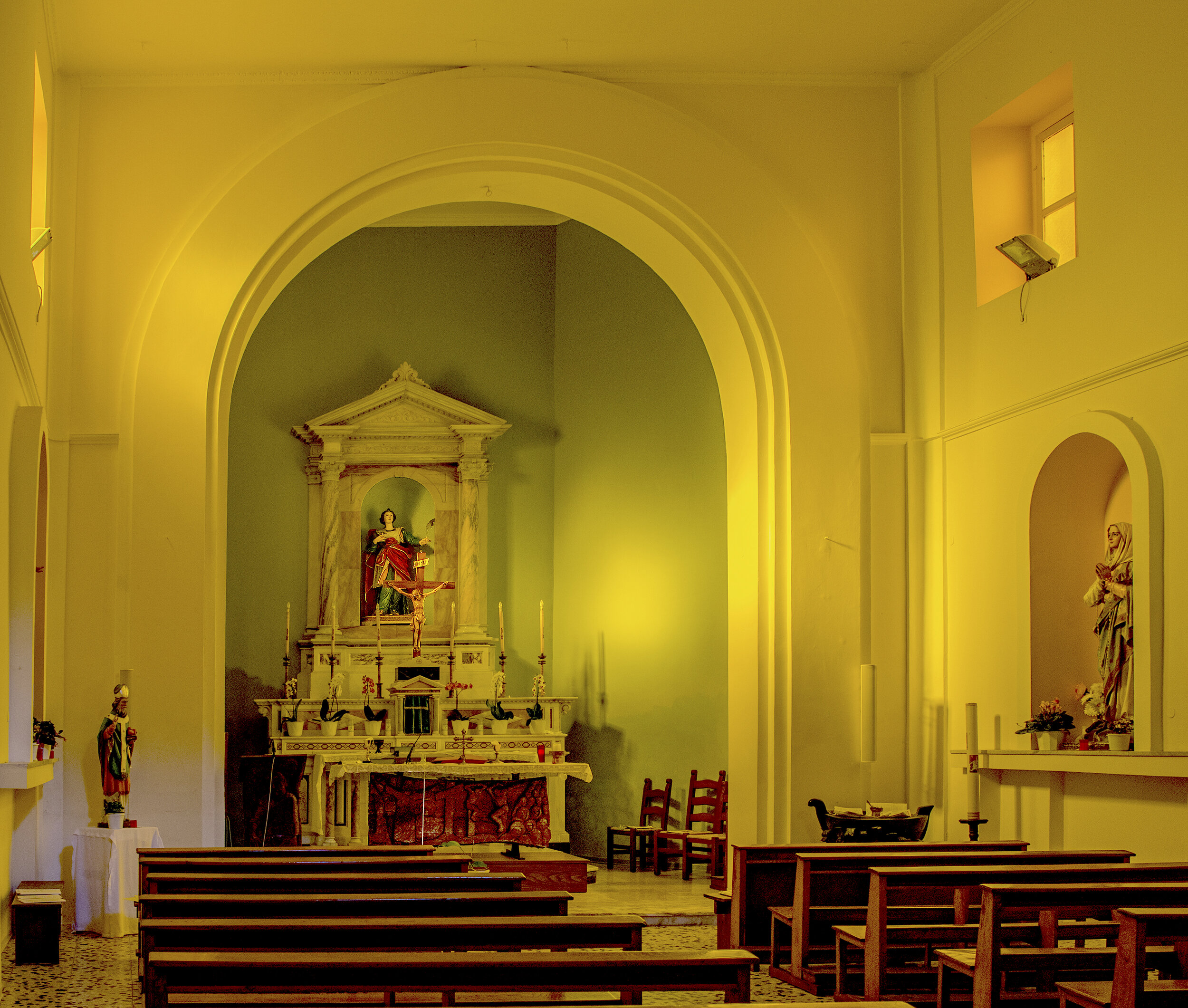
St. Lucy, whose name means 'light," is the patron saint of the blind. She was born in 283 A.D. in Syracuse, Sicily, and was killed there in 303 A.D. during the Roman persecution of Christians.
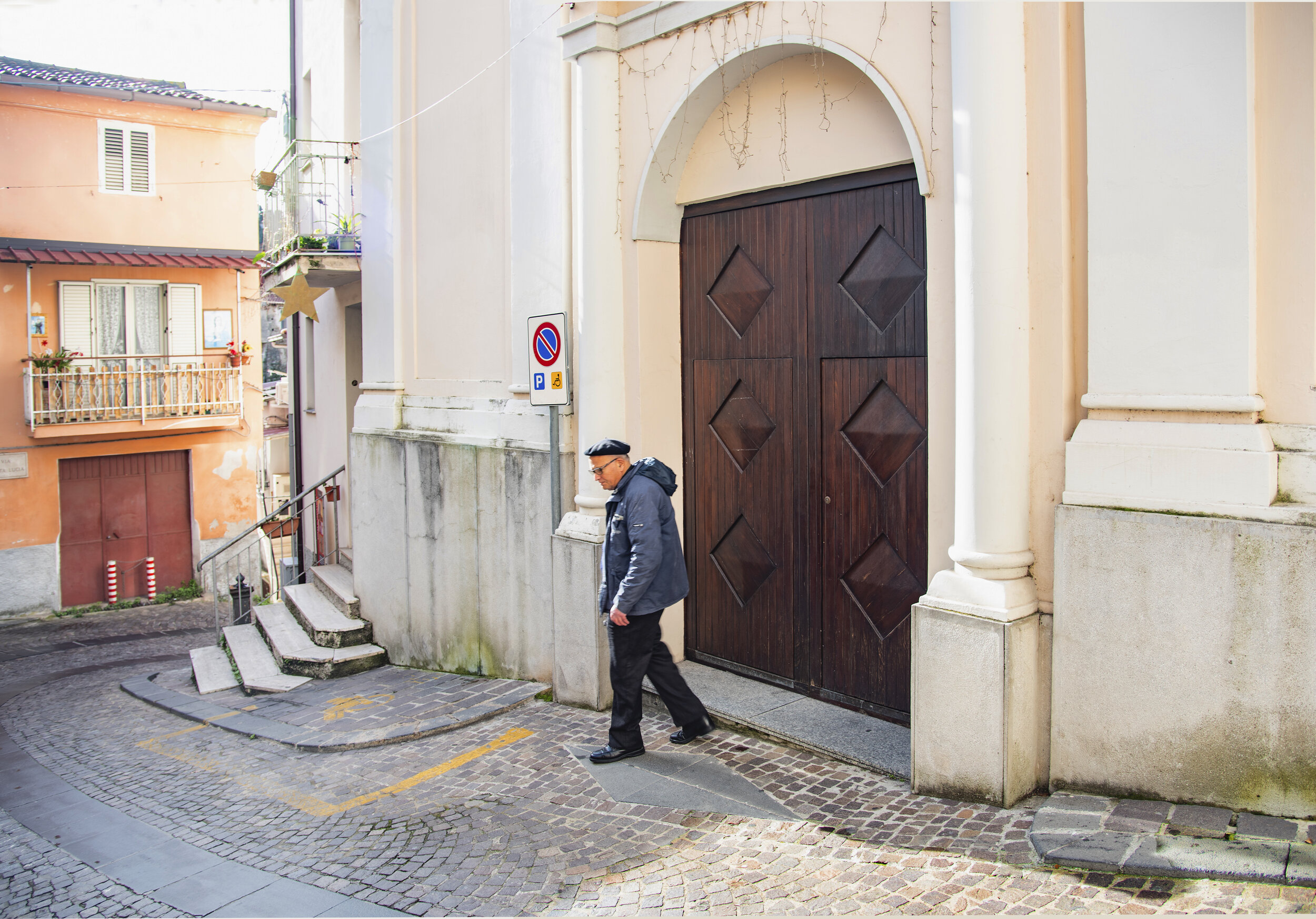
Father Vittorio Dattilo explained to us that he had a meeting with the bishop but he would meet with us the next morning to see if he could find records of my maternal grandmother.
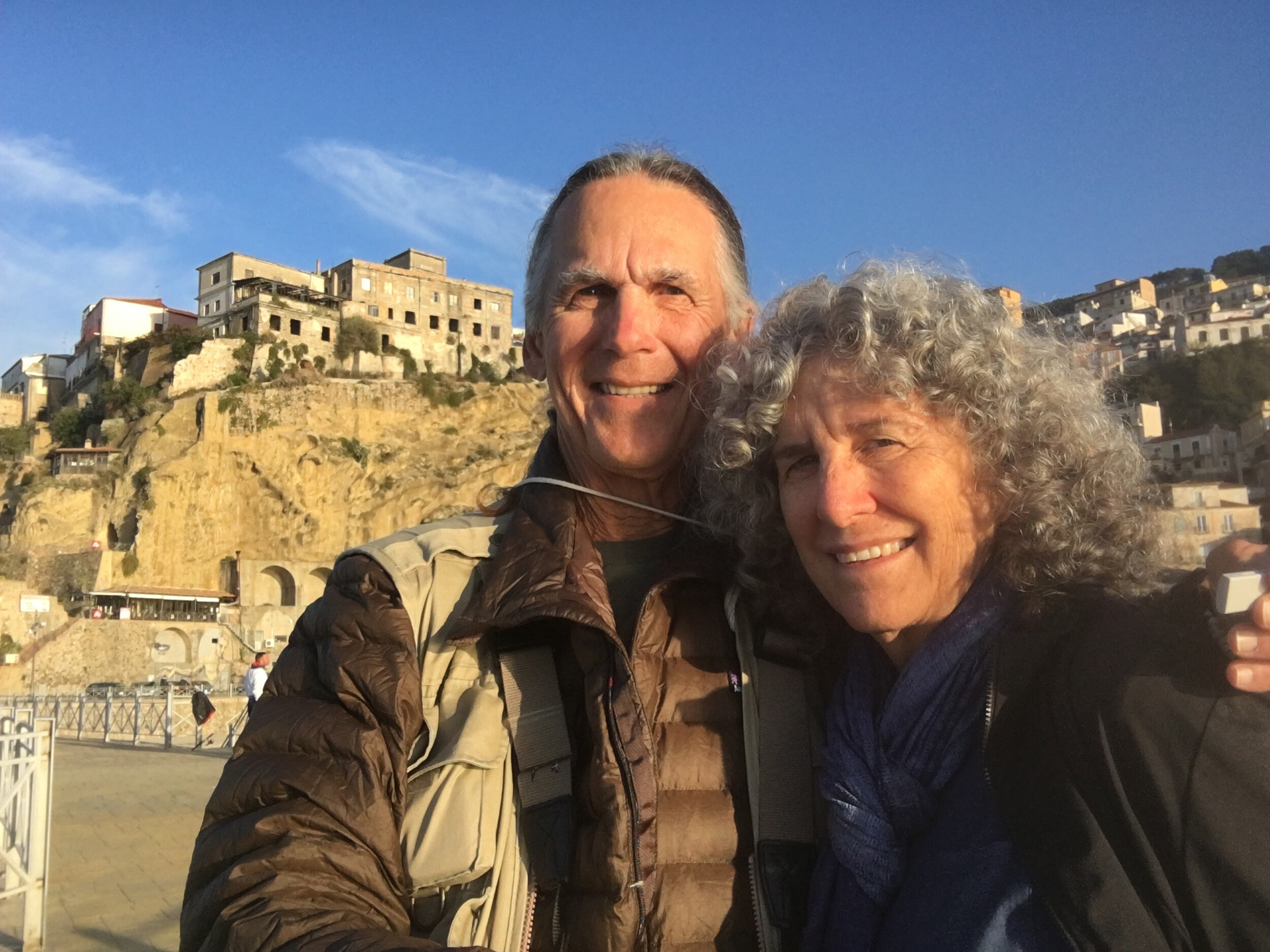
We decided to drive to Pizzo, a town on the Tyrrhrenian Sea coast. After lunch I had TARTUFO di Pizzo, a large ball of chocolate and hazelnut ice cream filled with molten chocolate fudge sauce!

Louise on the Pizzo seaside promenade with fishermen. In fact, Pizzo is known as a fishing village, especially for its tuna and coral.
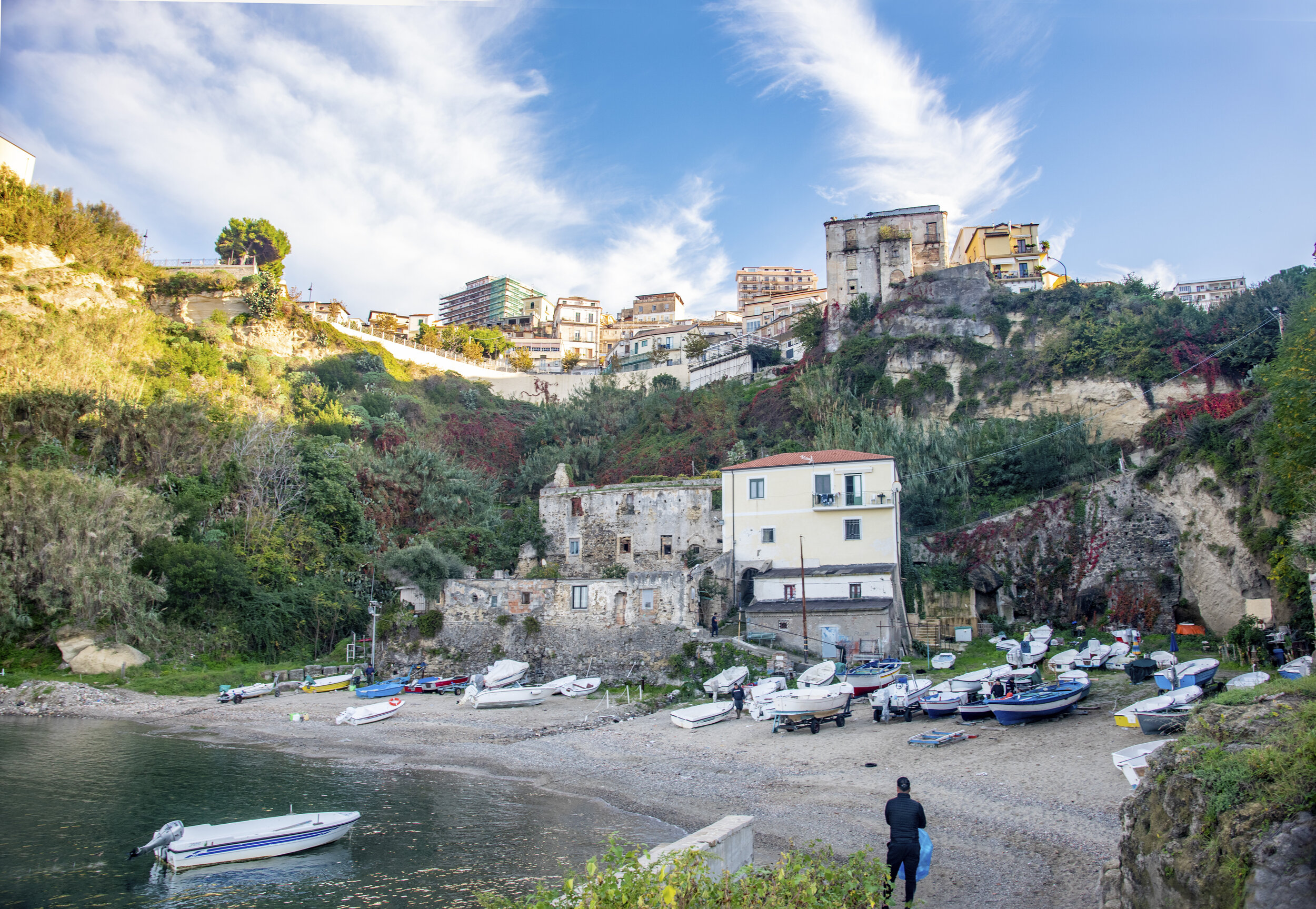
After lunch we walked the Pizzo beach and came upon an inlet below the town of Pizzo where men were repairing boats.
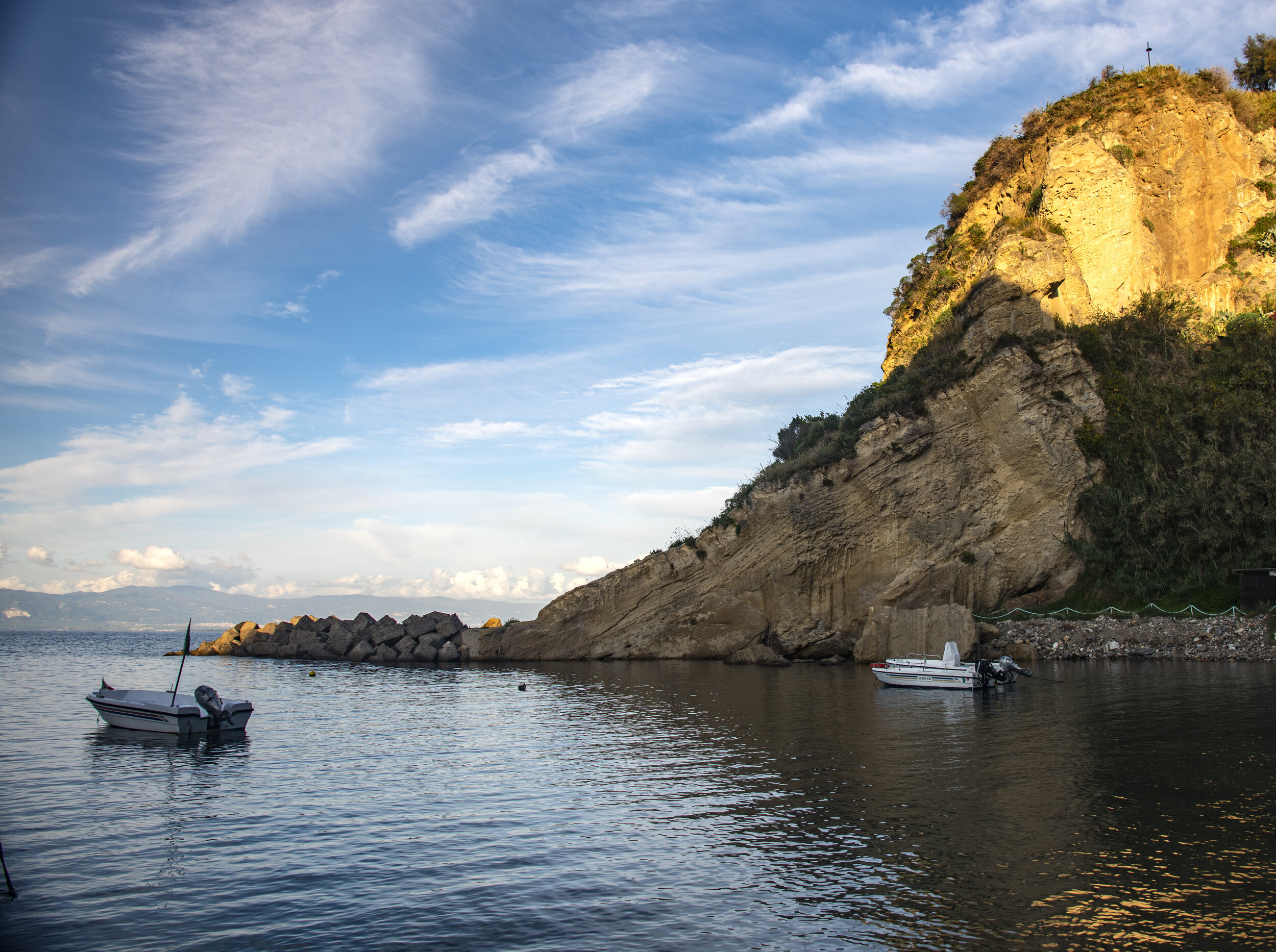
Upon leaving the inlet we were treated to the glow of the late afternoon sun.
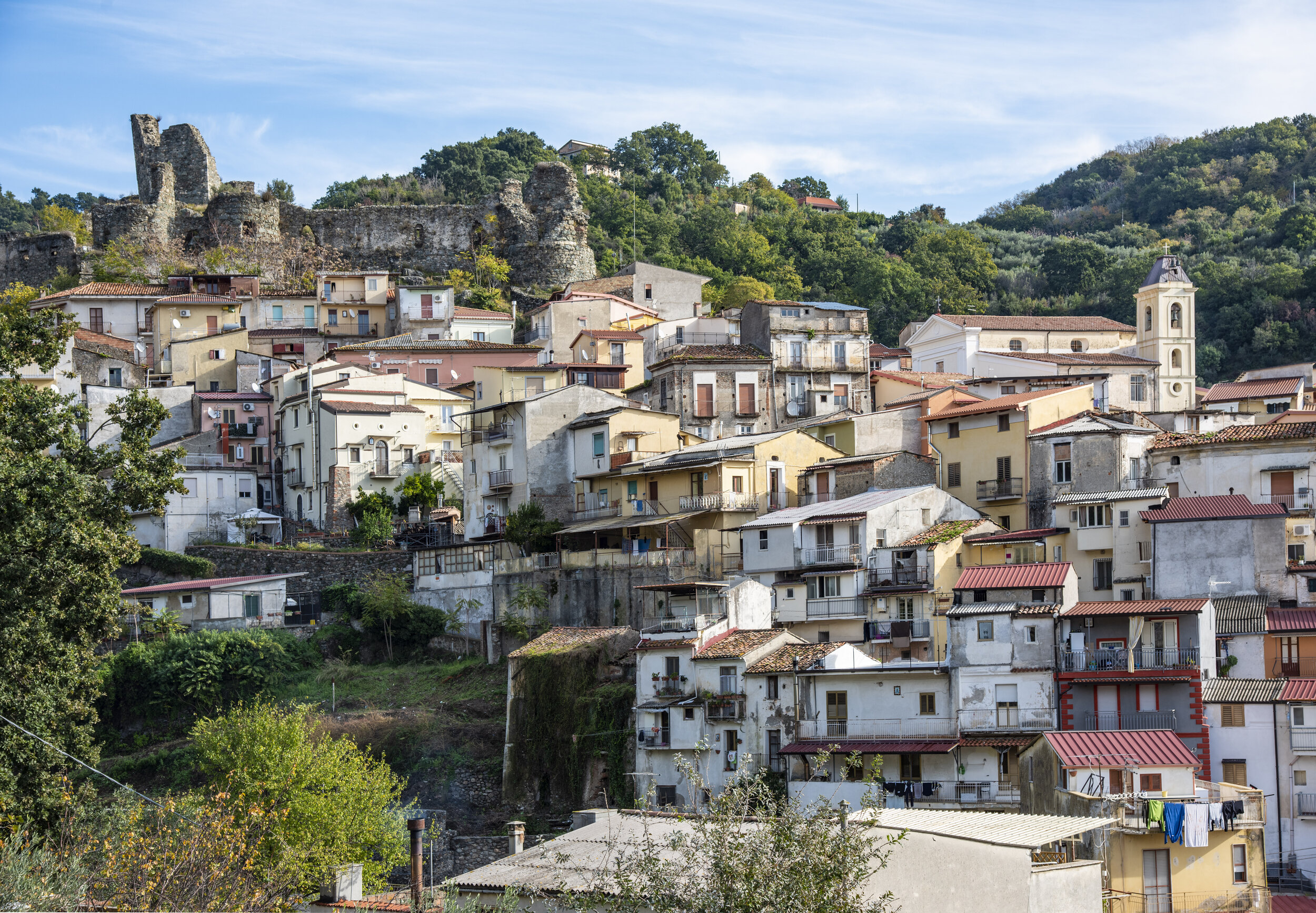
A view of Nicastro with the 11th-12th century Norman castle on the left and San Teodoro Chiesa, with its bell tower, on the right.
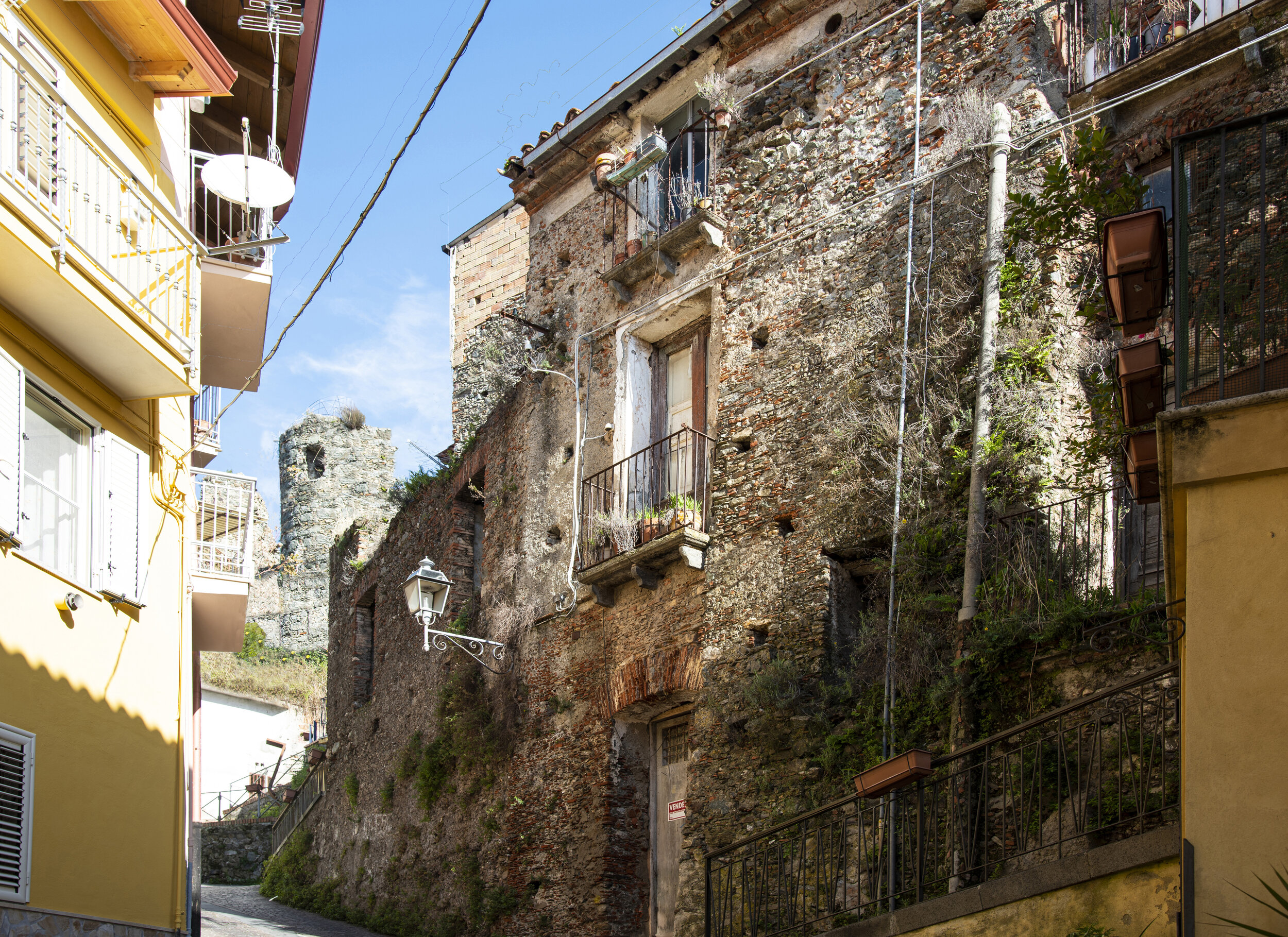
We parked next to the castle and walked down toward San Teodoro Chiesa. This area is known as Largo Dei Normani and is the older part of Nicastro. The door has a sign - "VENDESI", i.e., "For Sale".
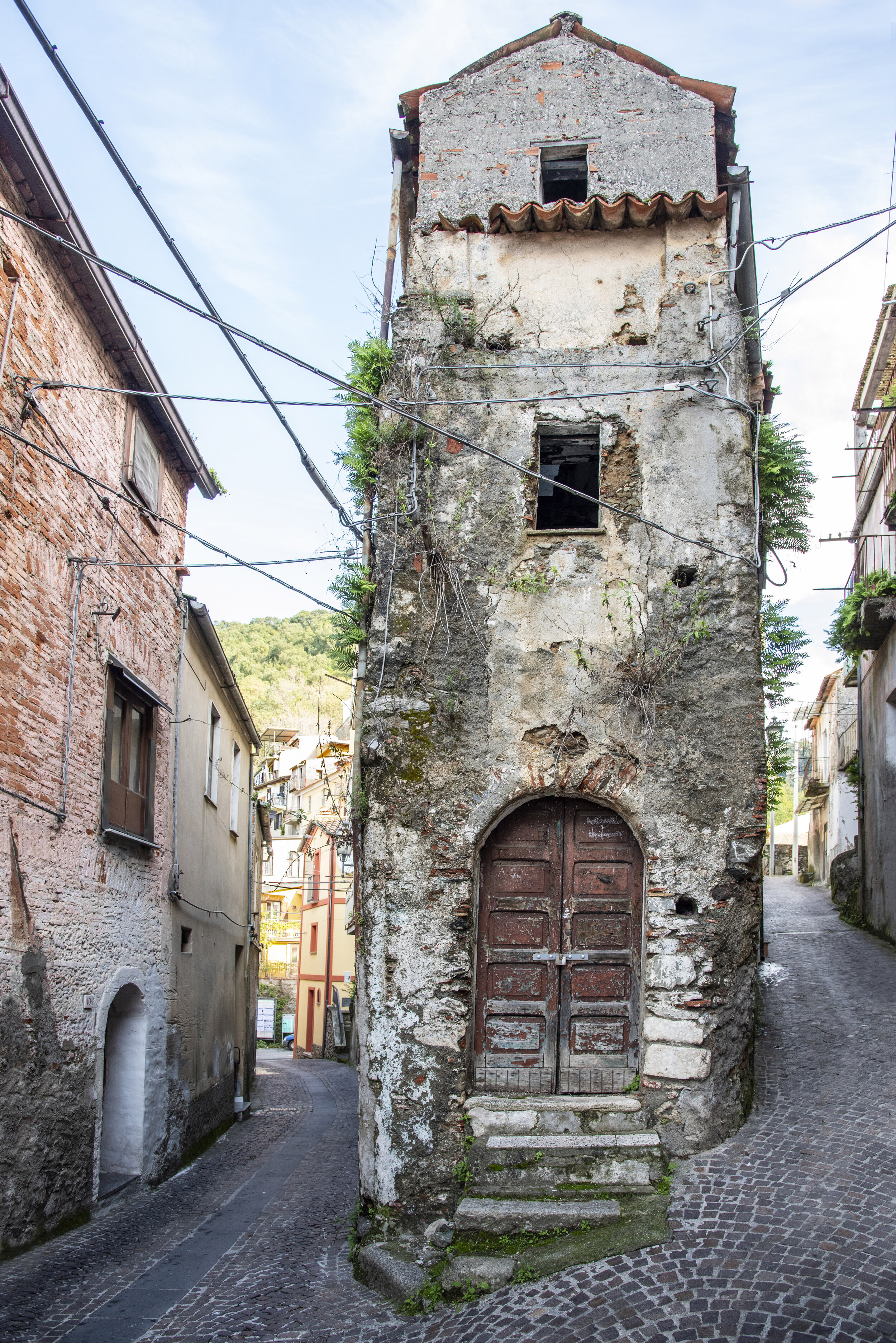
As is evident, the streets are quite narrow - room for driving very small cars only. Many towns are selling abandon houses for $1.00 with the proviso that you make it habitable within 3 years.
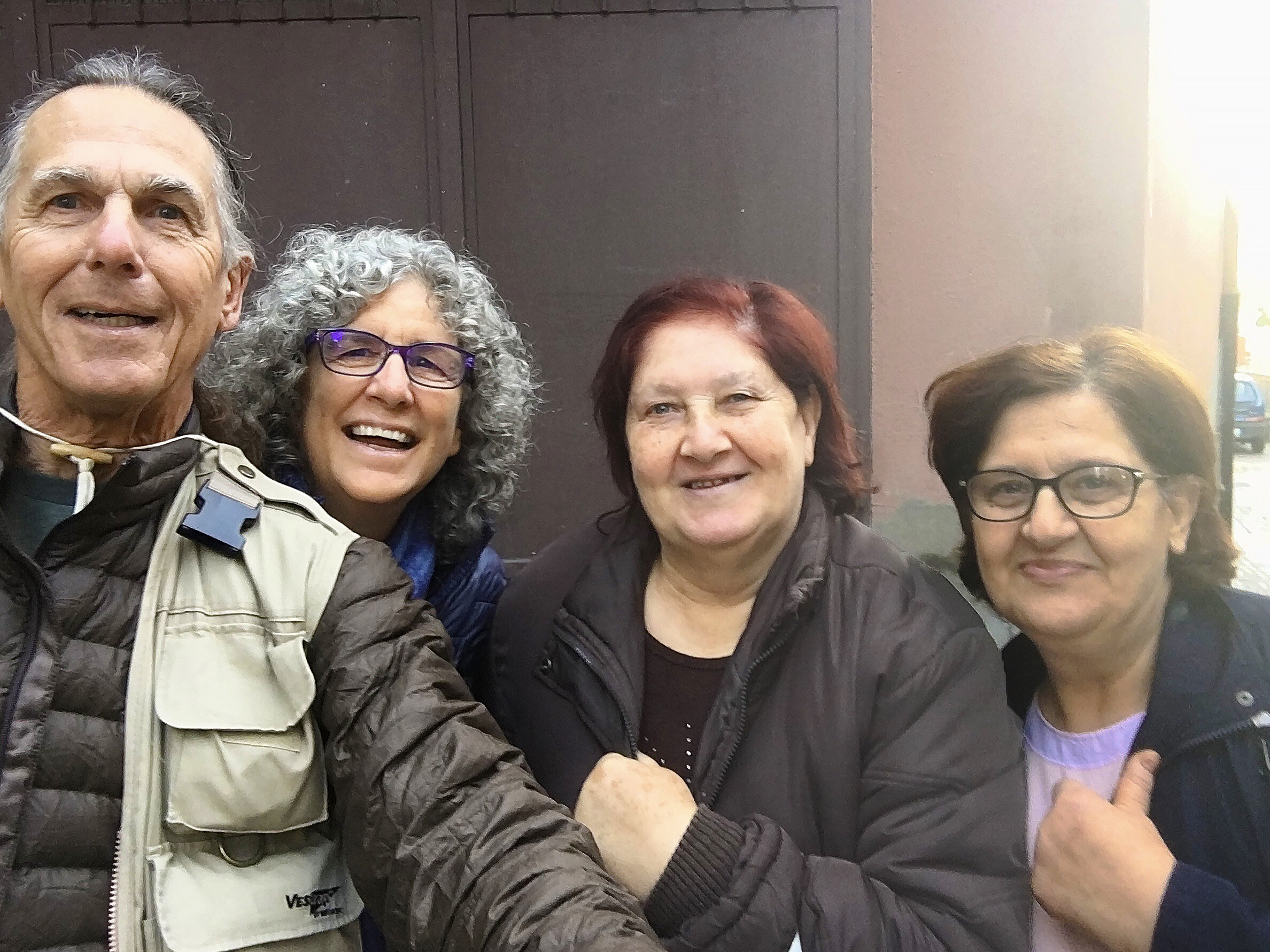
Looking for San Teodoro Chiesa we asked these women for directions and explained our quest. The woman next to Louise was living with a man who had the same family name as my maternal grandmother.
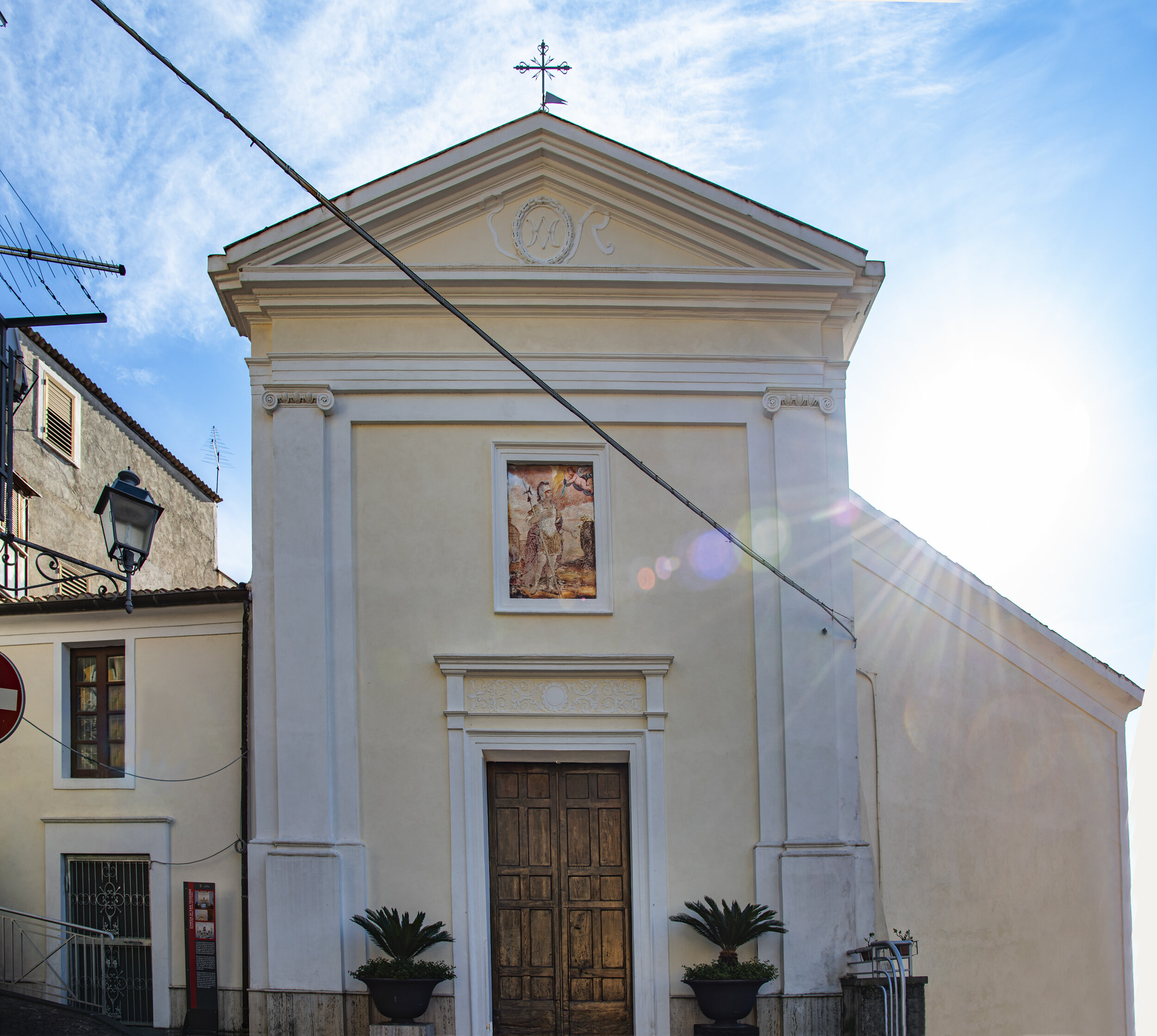
We arrived at San Teodoro but it was closed. Saint Theodore is known as a warrior saint. He was martyred by being thrown into a furnace in the 4th century because he burned a pagan temple.
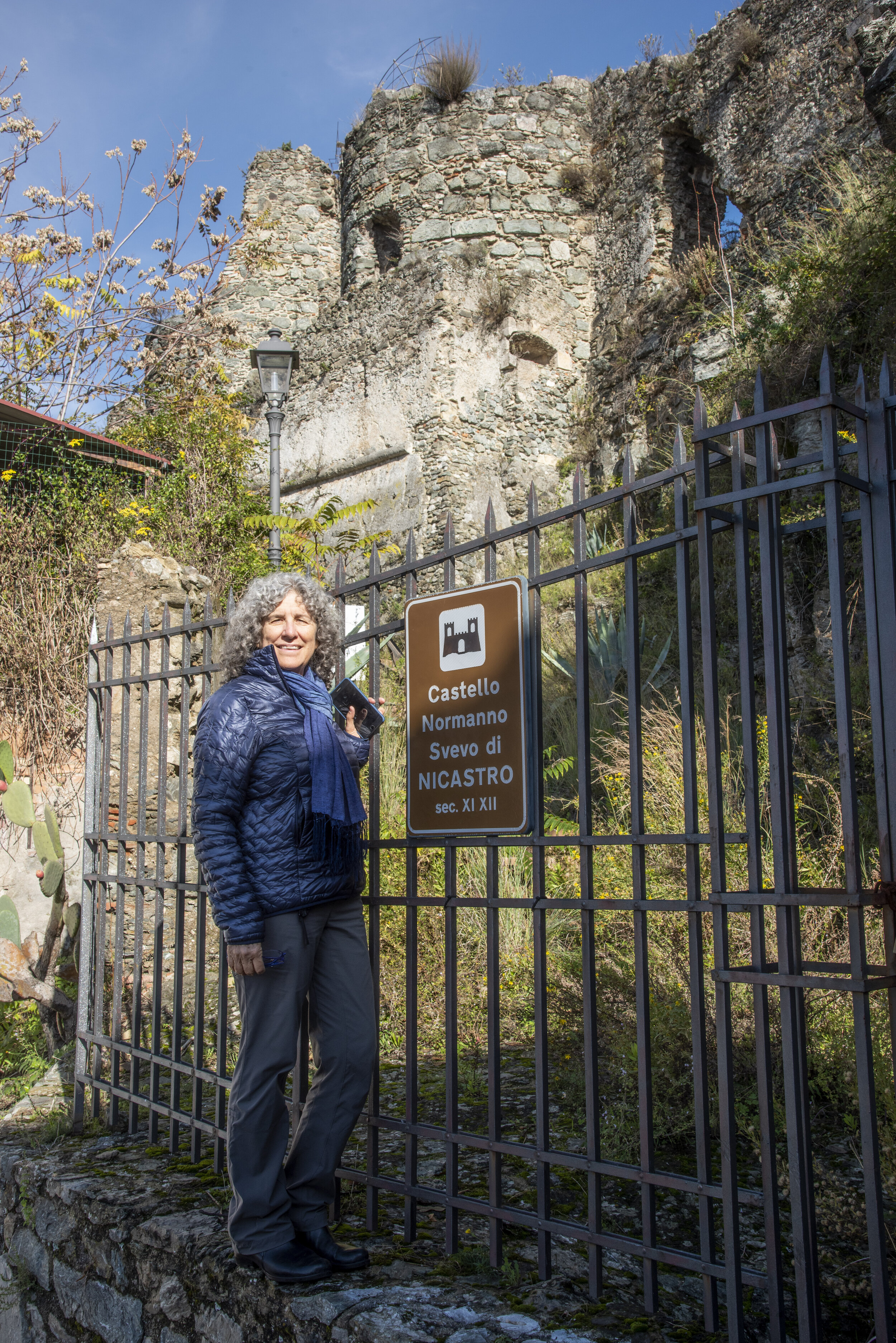
Louise below the 11th-12th century Norman Castle in Nicastro.
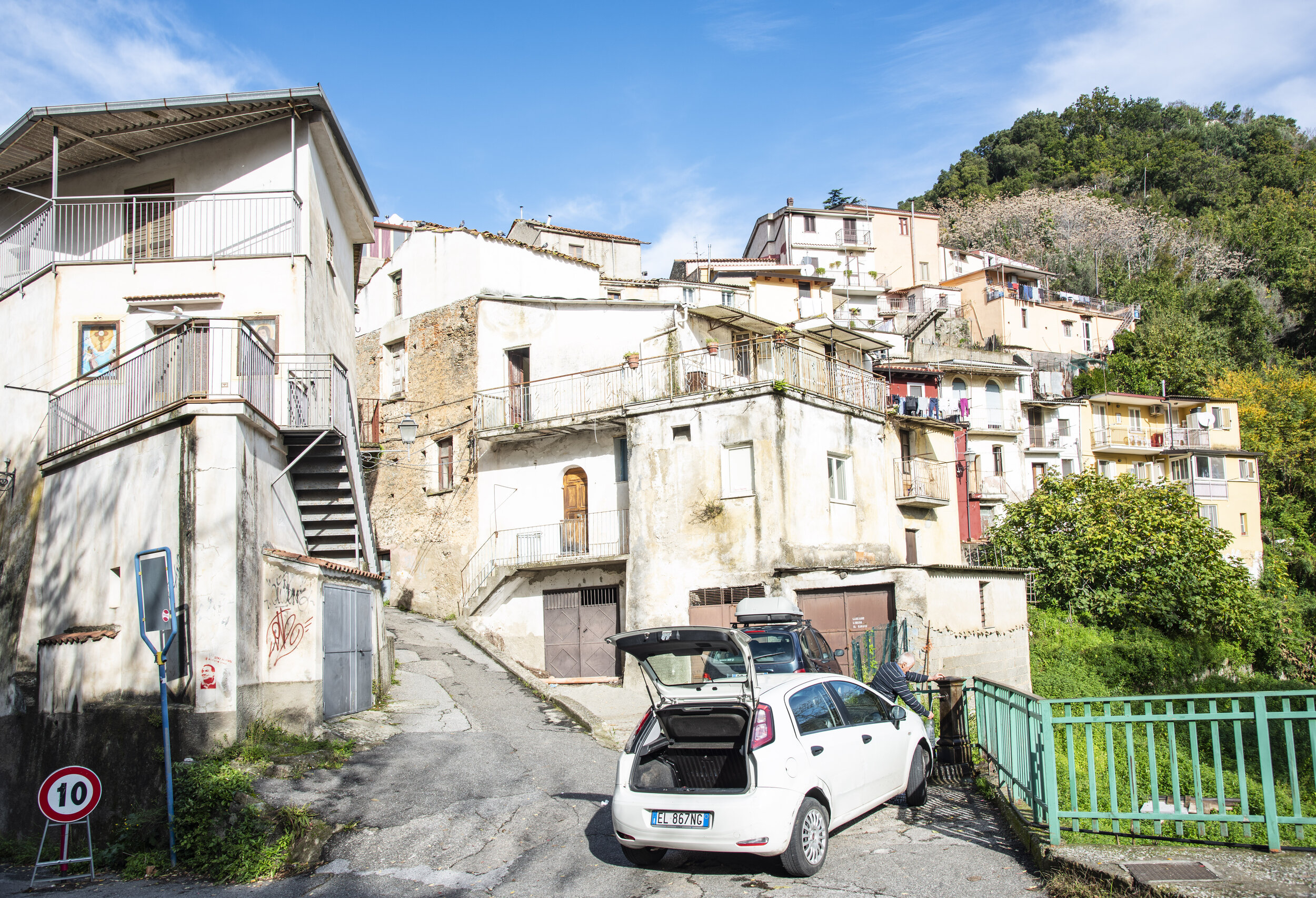
Driving in the streets of Nicastro was a unique experience as we headed to our 9:00 a.m. meeting with Father Vittorio at San Nicola/Santa Lucia Chiesa.
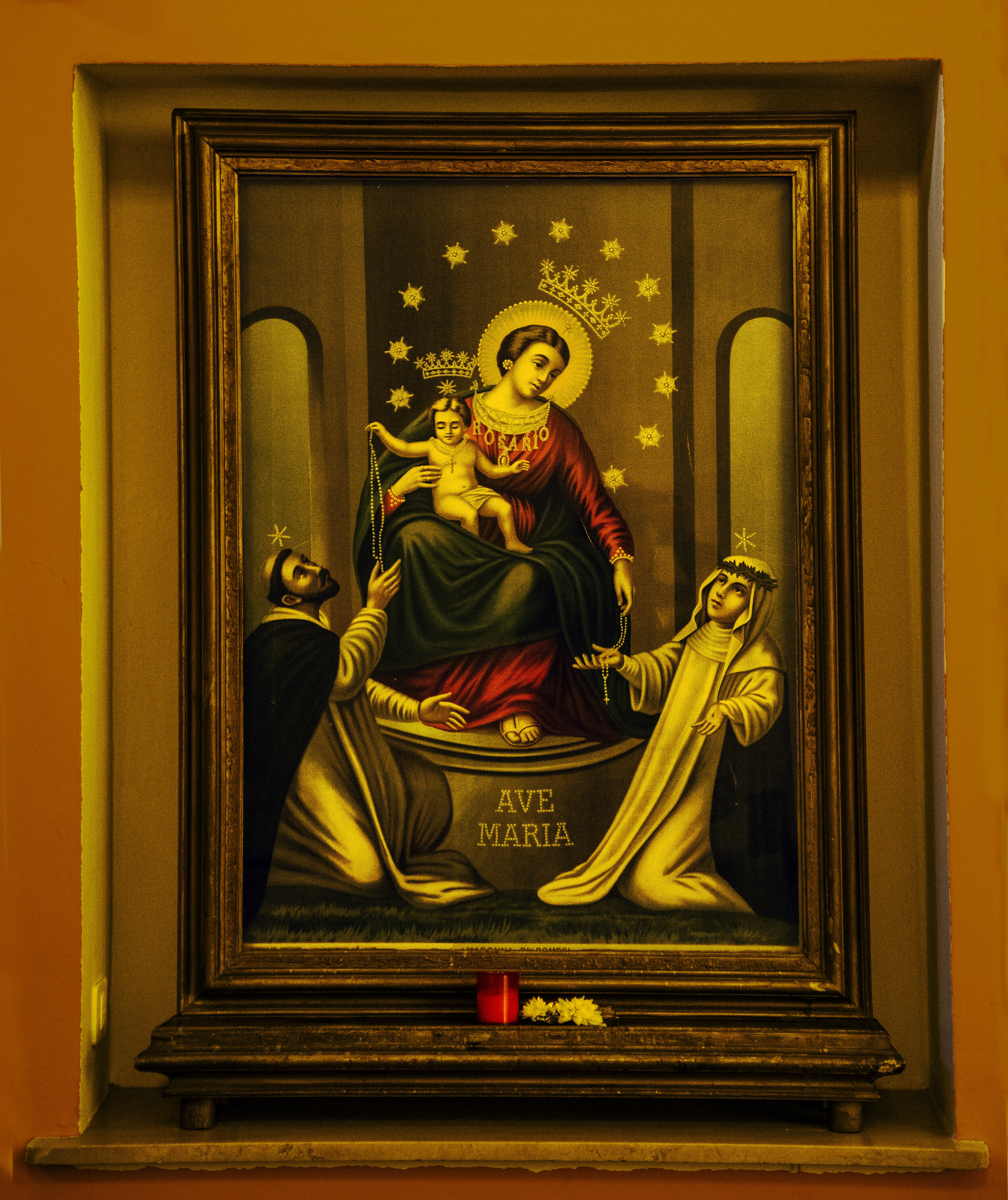
in San Nicola/Santa Lucia, a picture of the two Saints kneeling at the feet of Mary and Jesus. Father Vittorio was waiting for us at 9:00 a.m.
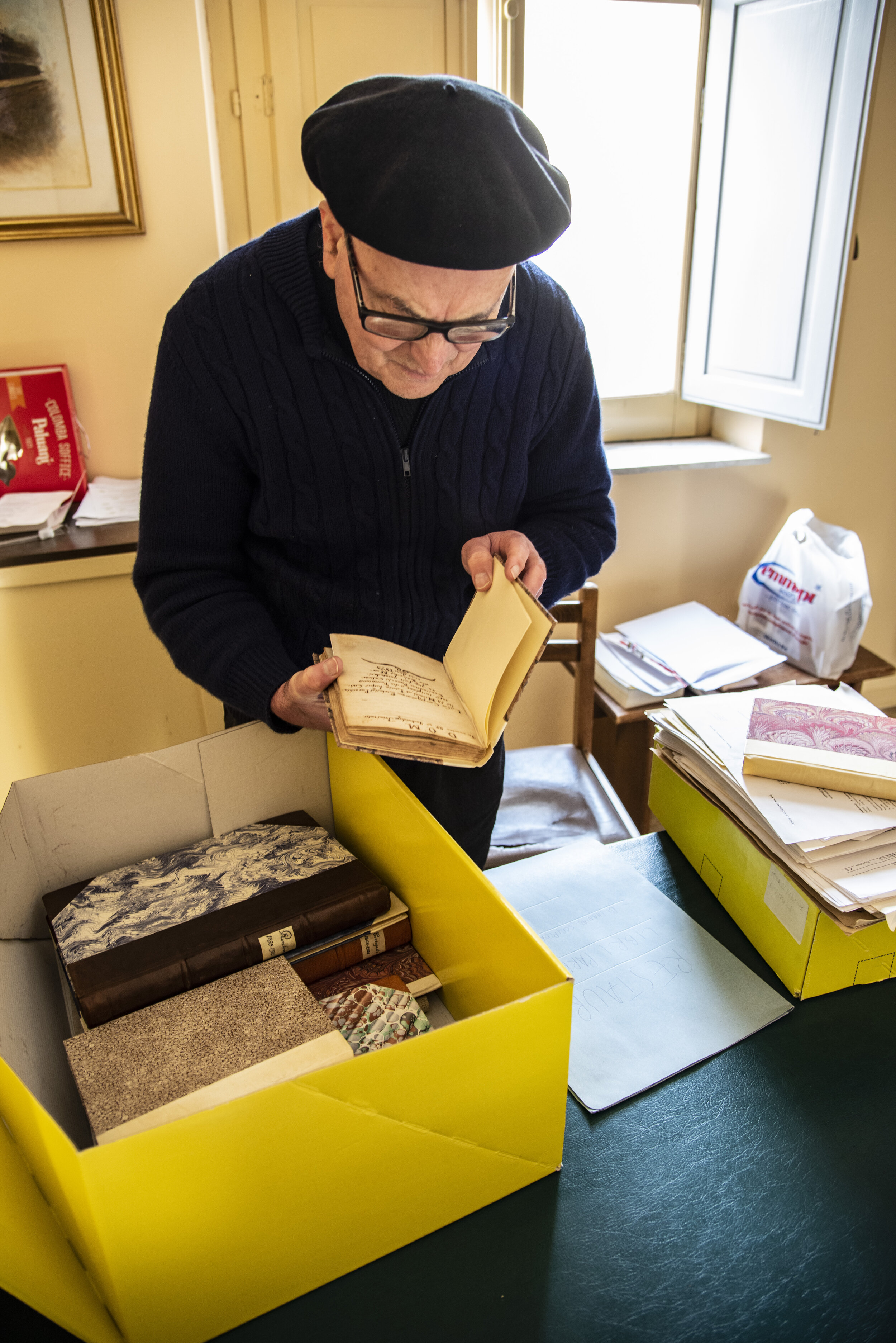
Father Vittorio Dattilo went to his cabinet and retrieved this box full of record books marked on the spine by years. We were looking for 1886.
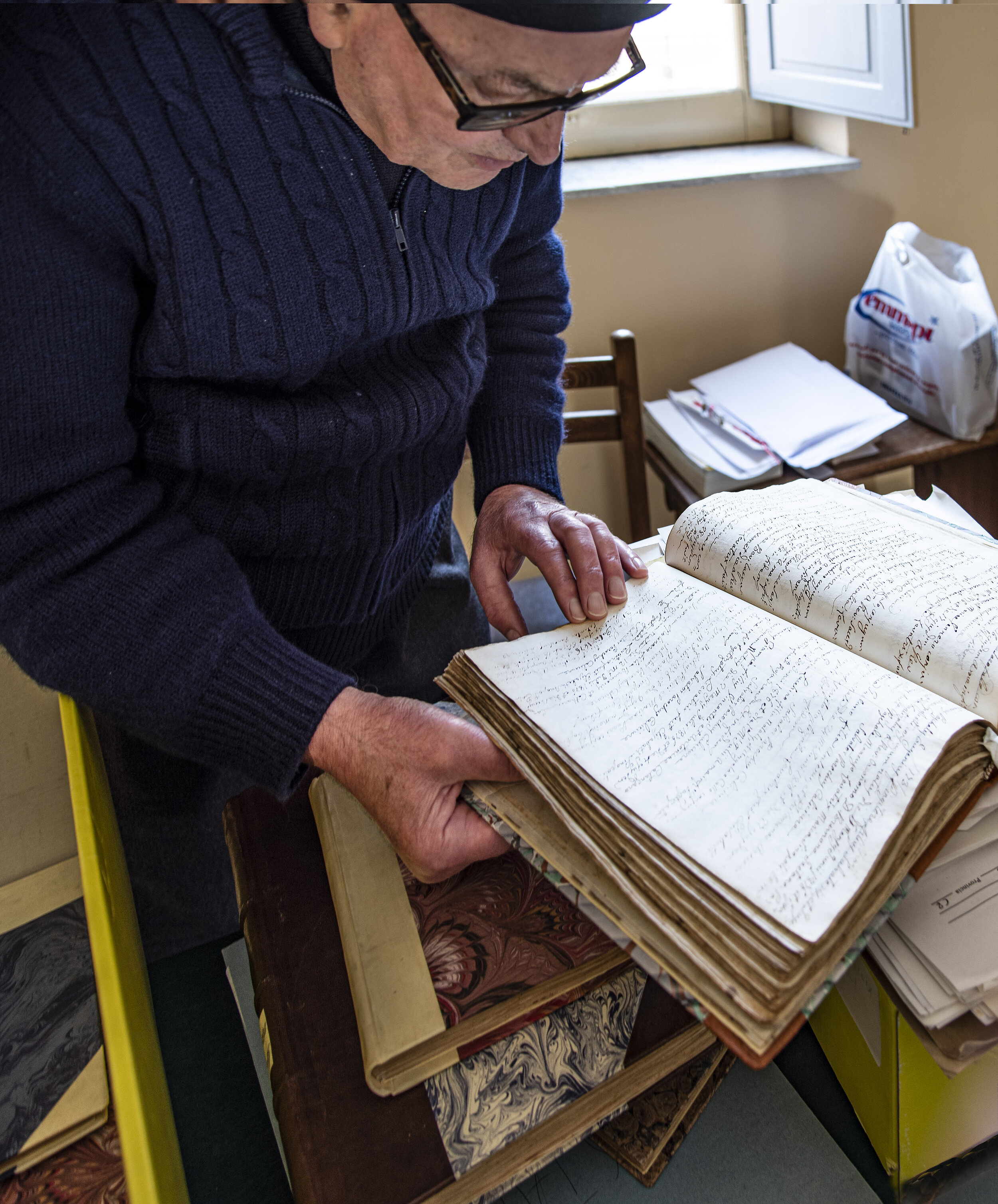
Although there were some names similar to my maternal grandmother in other years, there was nothing in 1886. Thus, Father Vittorio recommended going to San Teodoro, after 5:00 p.m. mass.
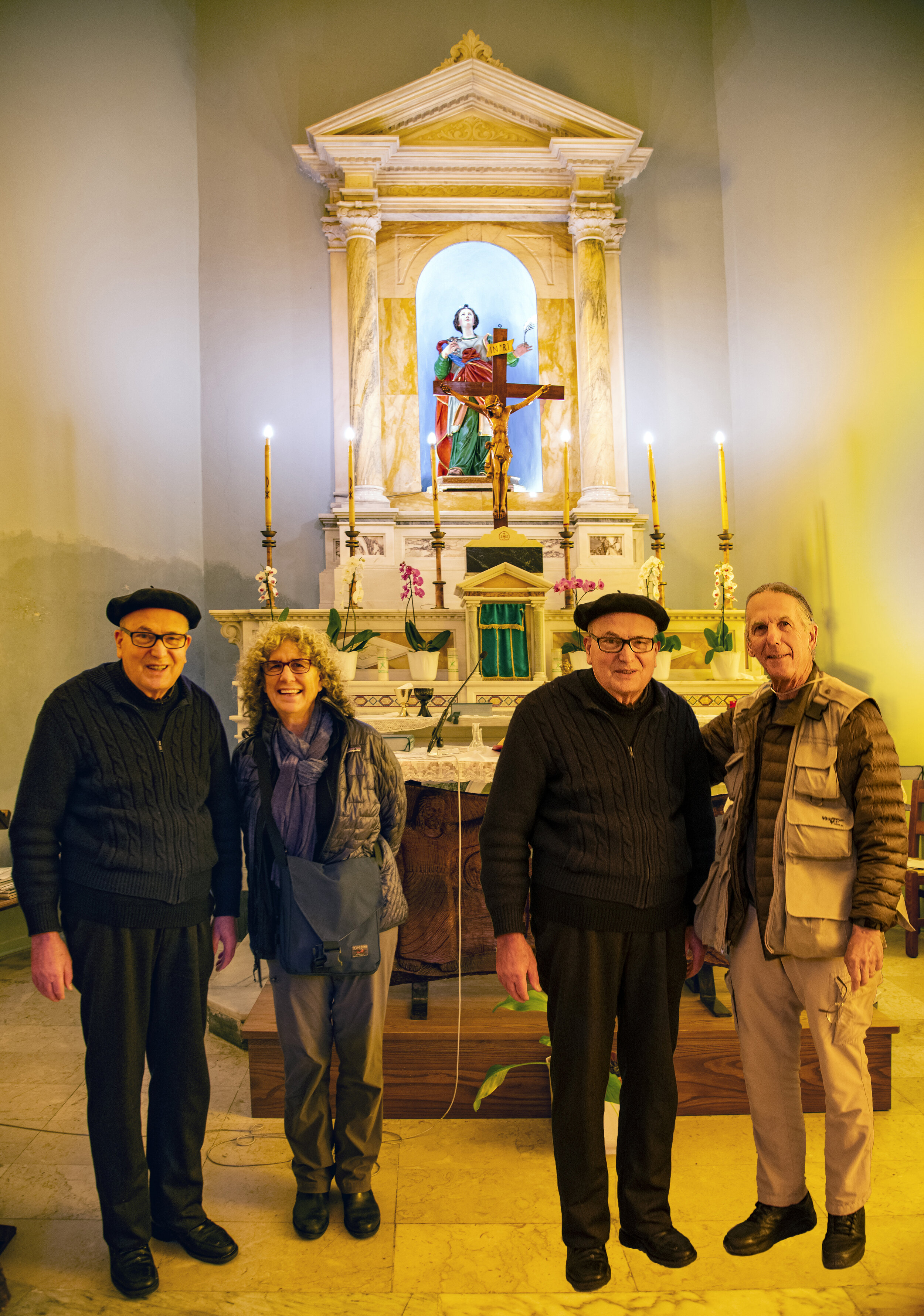
We both took a picture with Father Vittorio so I combined the two into one.
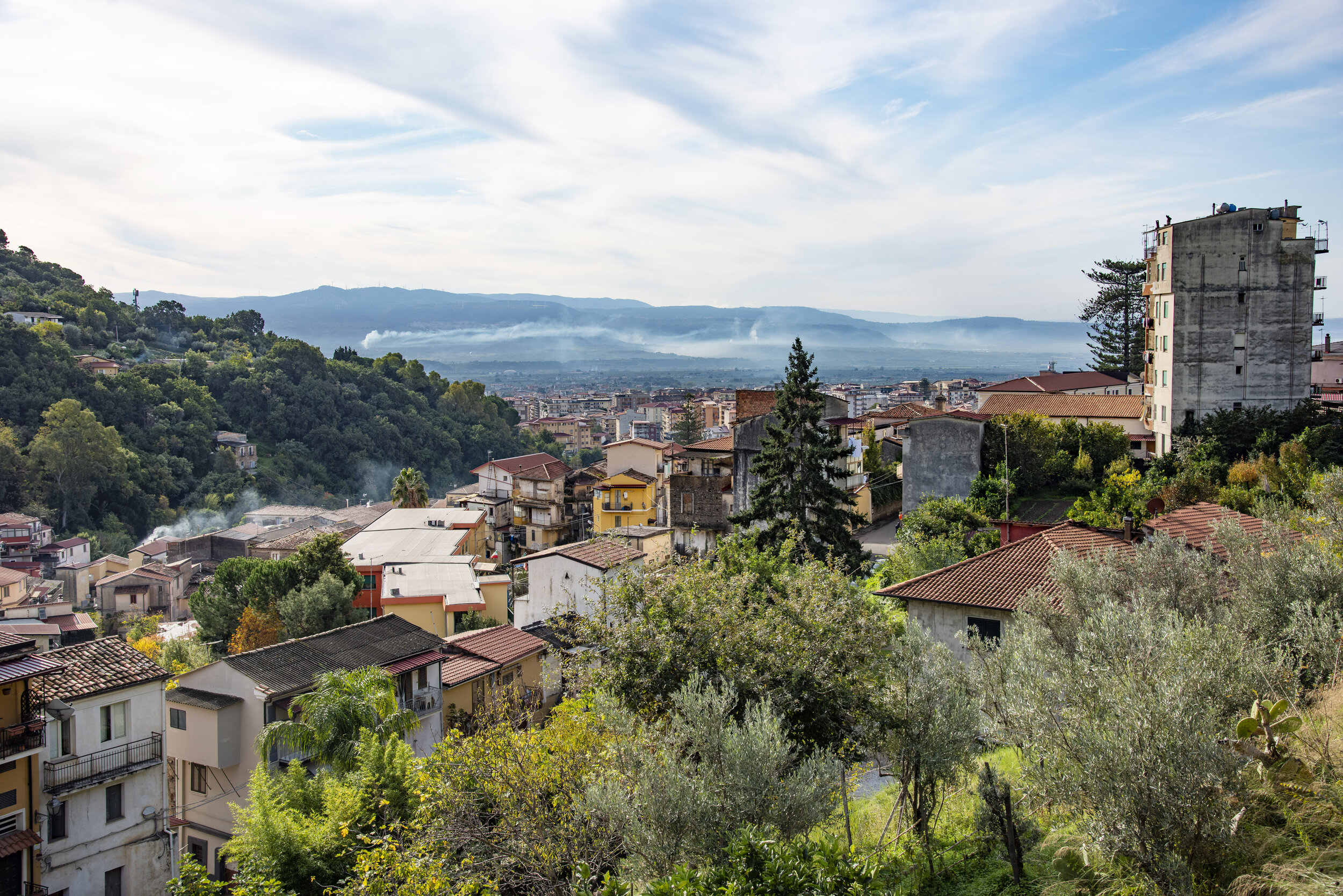
View over Nicastro toward the coastal plain, Piana di Sant Eufemia, which was created by drying a wide marshy area.
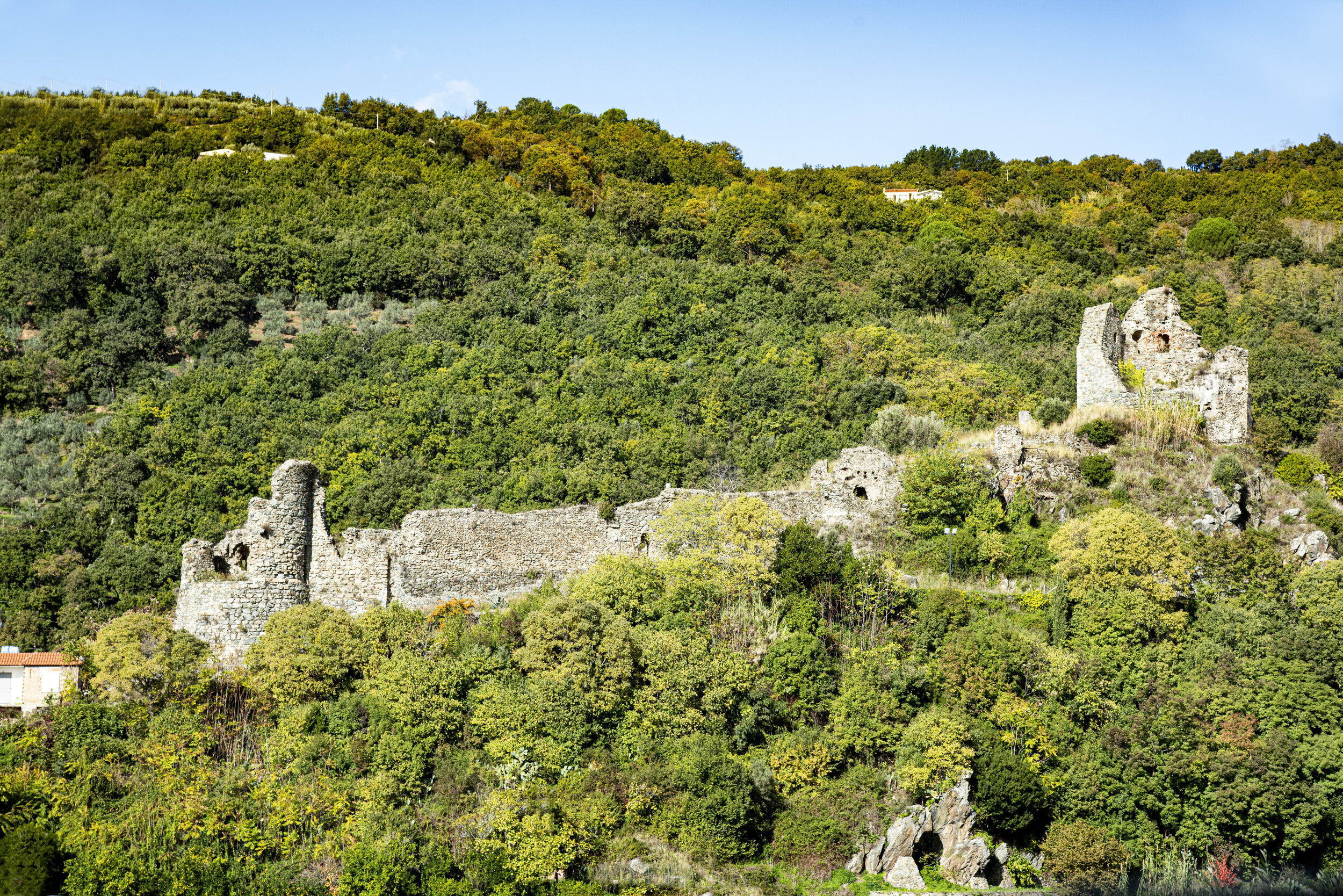
A great Benedictine abbey, St. Eufemia, was founded here in 1062 by the Norman Count Robert Guiscard. Side view of the 11th century Norman Castle.
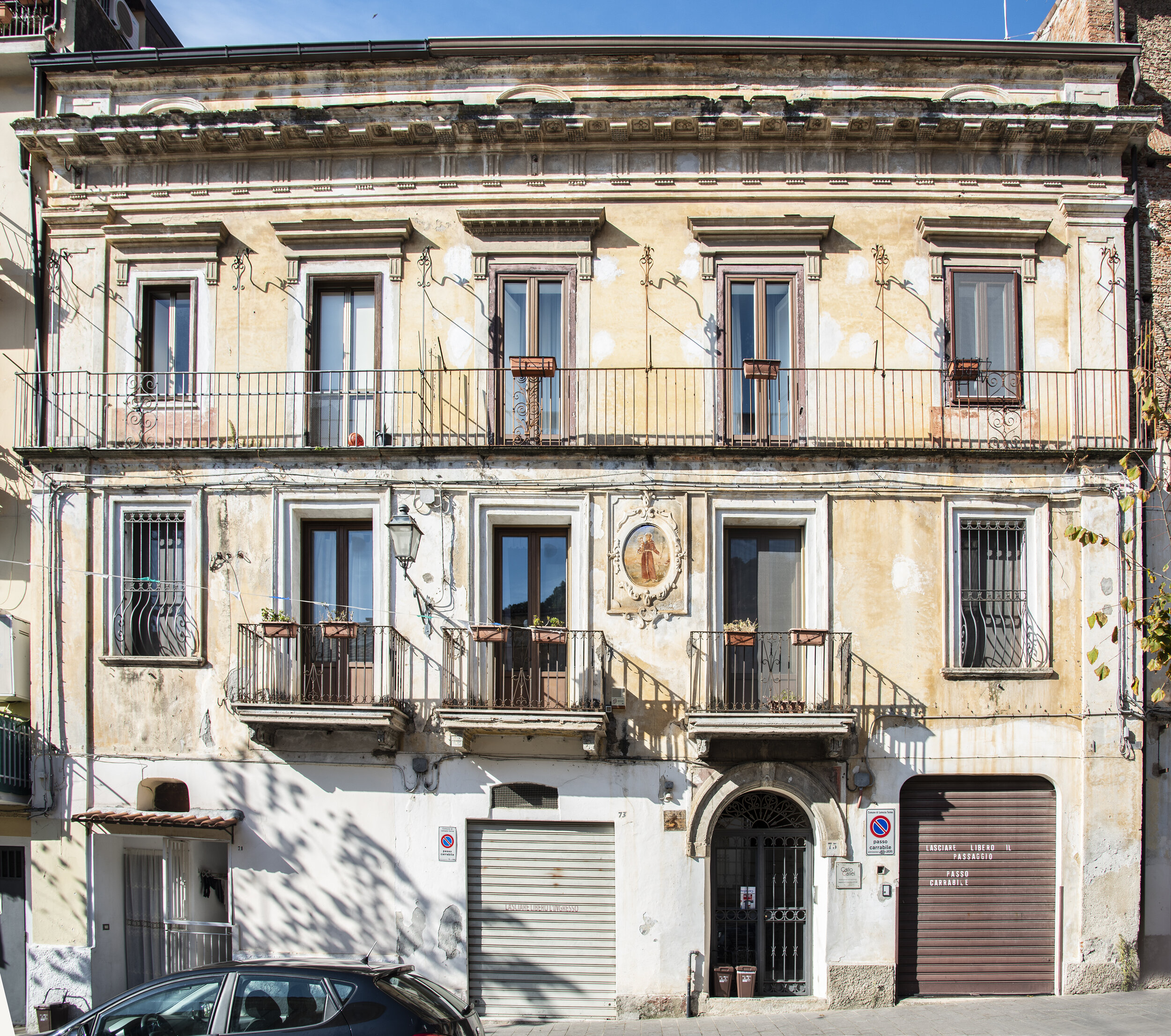
Walking around Nicastro I noticed many buildings decorated with San Antonio of Padua who is known as the patron saint of the poor, of sailors and fishermen, of priests and travelers, a wonder-worker.

San Antonio (born in 1195) depicted with Christ on a book, symbolizing his intimacy with God and his knowledge, teaching & preaching: and a lily, symbolizing his purity and lifelong struggle vs. evil.
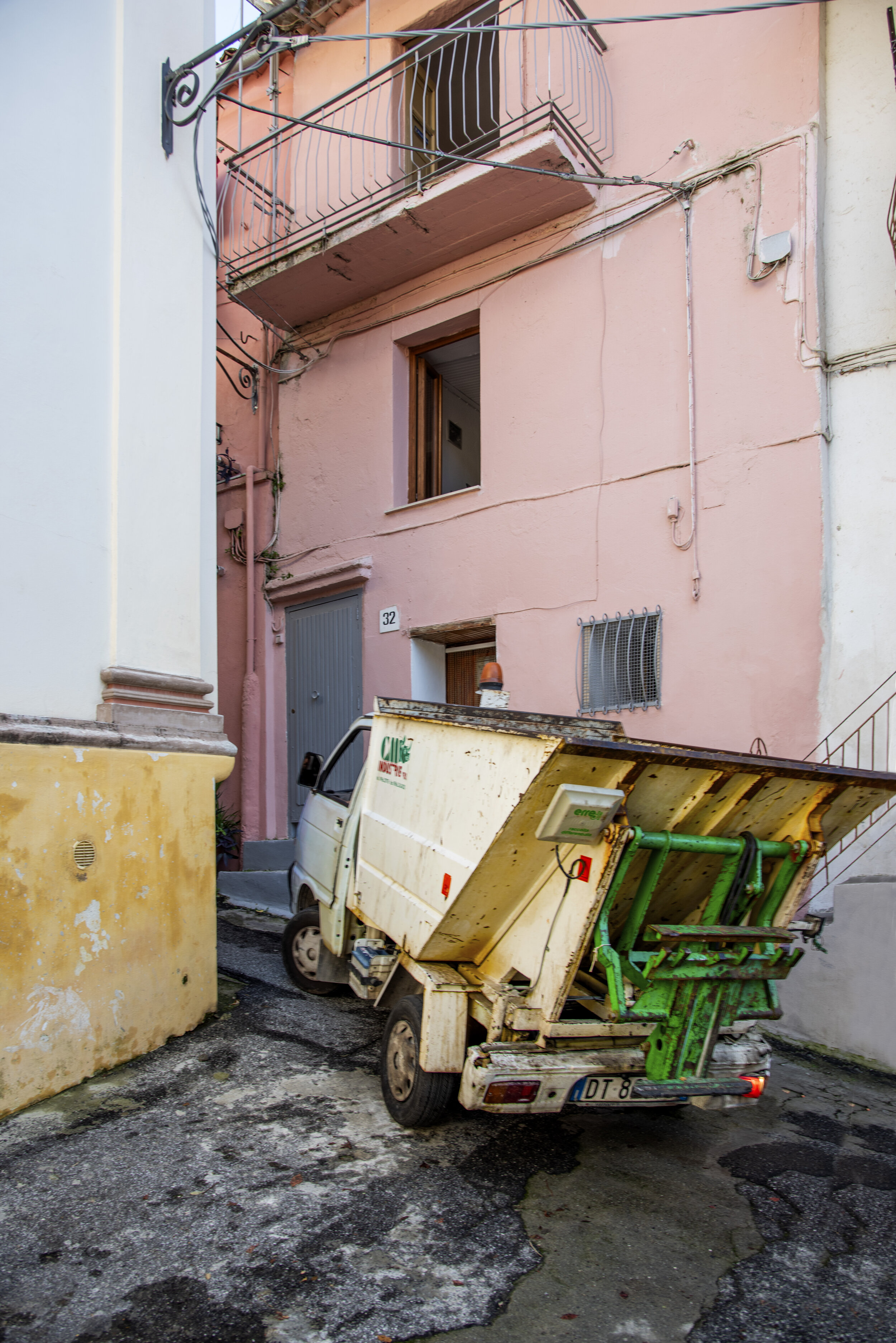
As shown earlier, the streets of Nicastro are very narrow, thus the miniature trash truck backing out of this street. Love it!
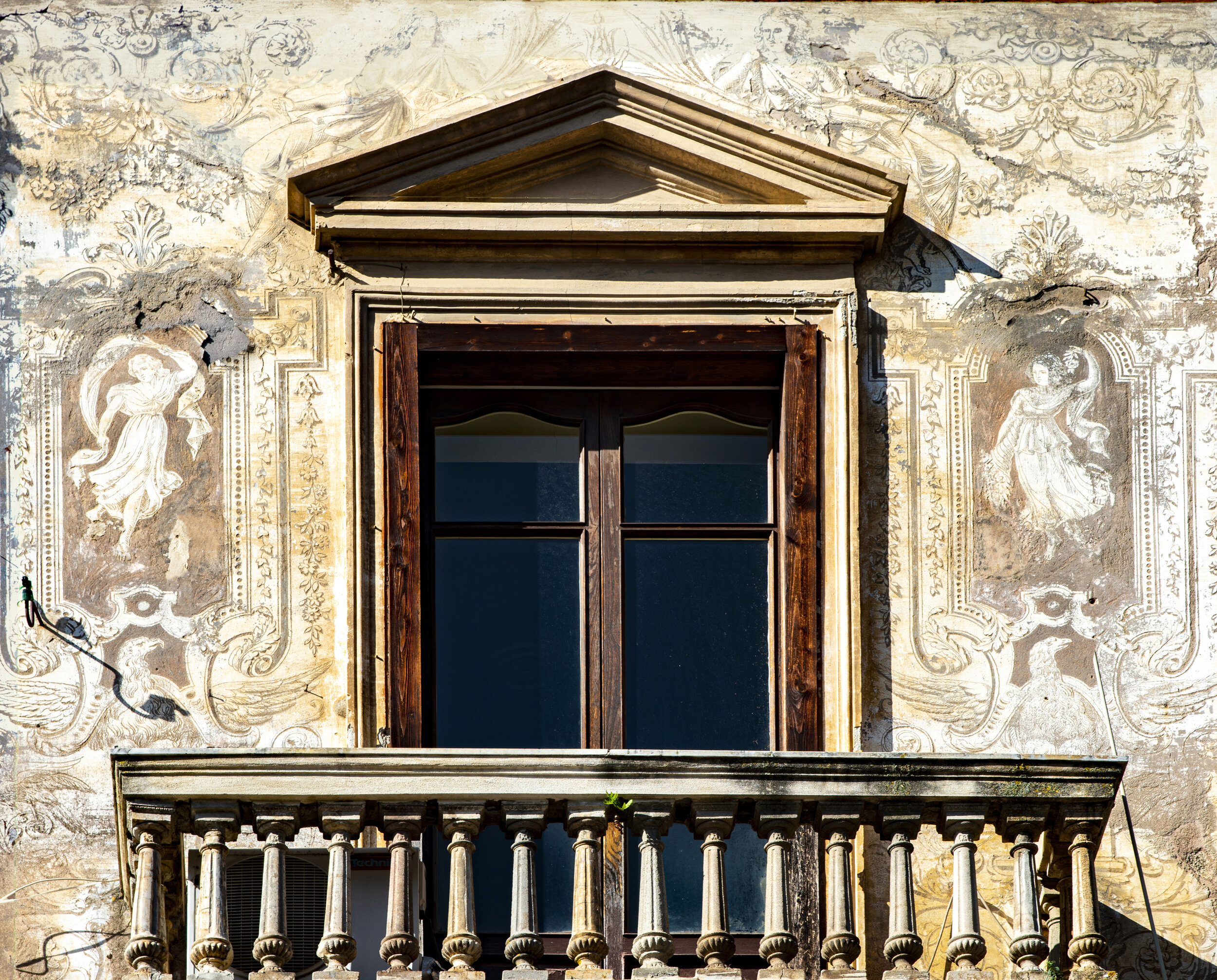
I thoroughly enjoyed this building's facade - decorated with paintings of dancing and resting figures but wanted its beauty restored.
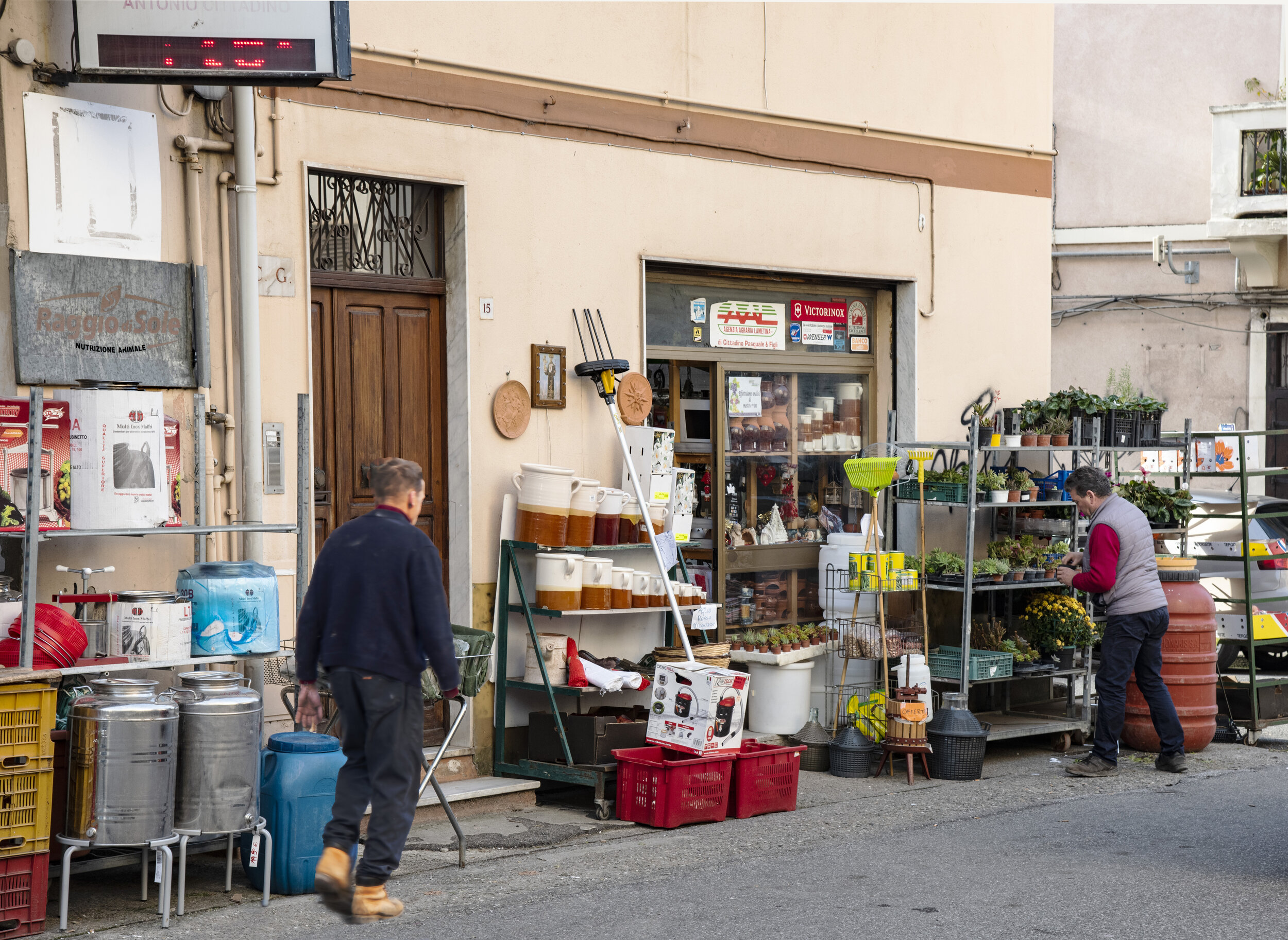
This store reminded me of hardware stores that were ubiquitous when I was growing up in Philadelphia. Today they are all but extinct due to the big box chain store/outlets.
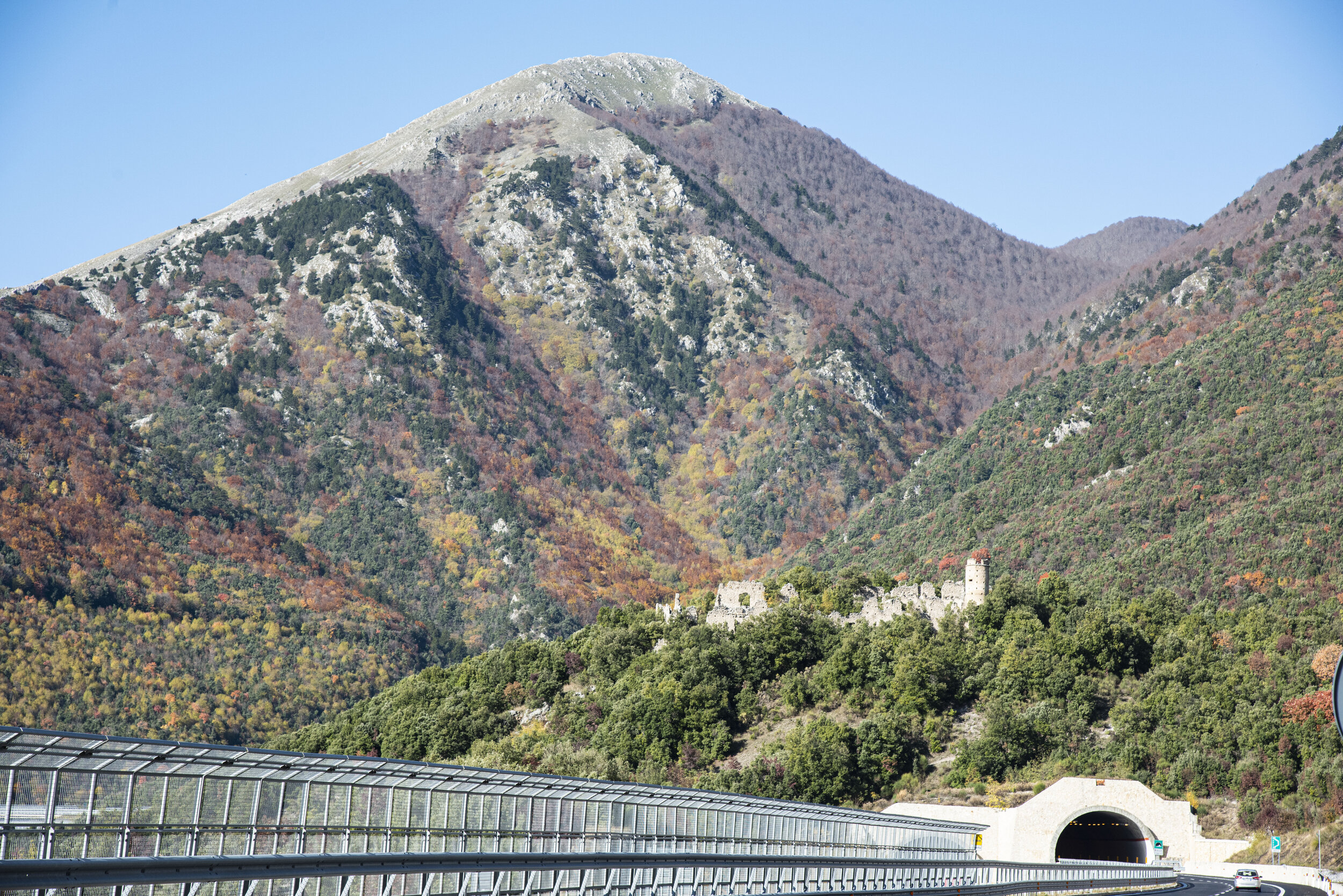
Given we were going to a 5:00 p.m. mass, we took a day trip to Tropea. On the way we were treated to a view of this CASTLE sitting above a highway tunnel! Amazing.
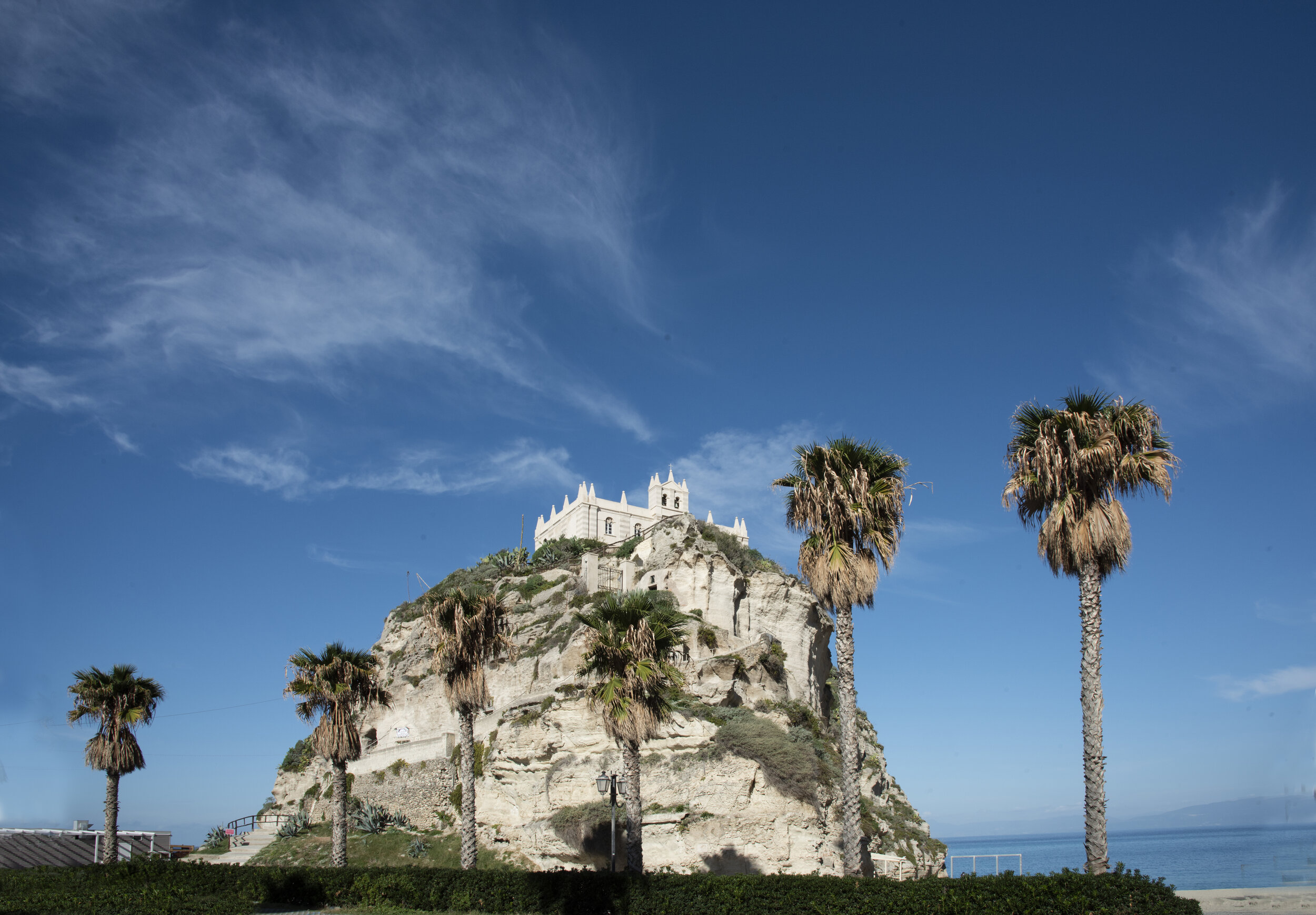
In Tropea we saw the Sanctuary of Santa Maria dell'Isola, a 6th century Benedictine monastery built on a rock overlooking the sea. The church had to be rebuilt due to earthquakes in 1783 and 1905.

Tropea is known for its white-sand beaches located on a stretch of coast called La Costa Degli Dei (The Coast of the Gods) along the Tyrrhenian Sea on the east coast of Calabria.
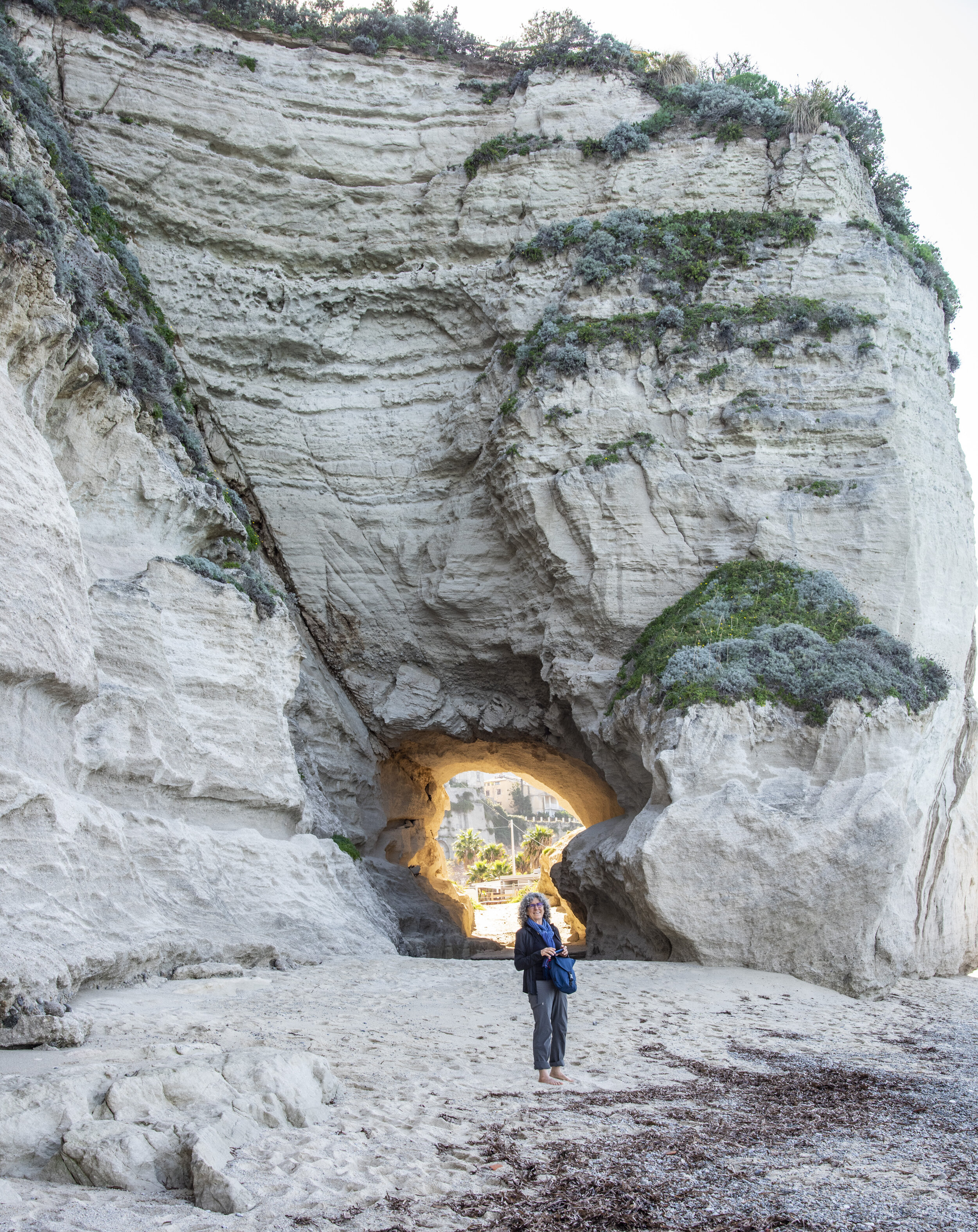
Louise enjoyed being on the beach at Tropea, especially with a fantastic rock formation for her background.
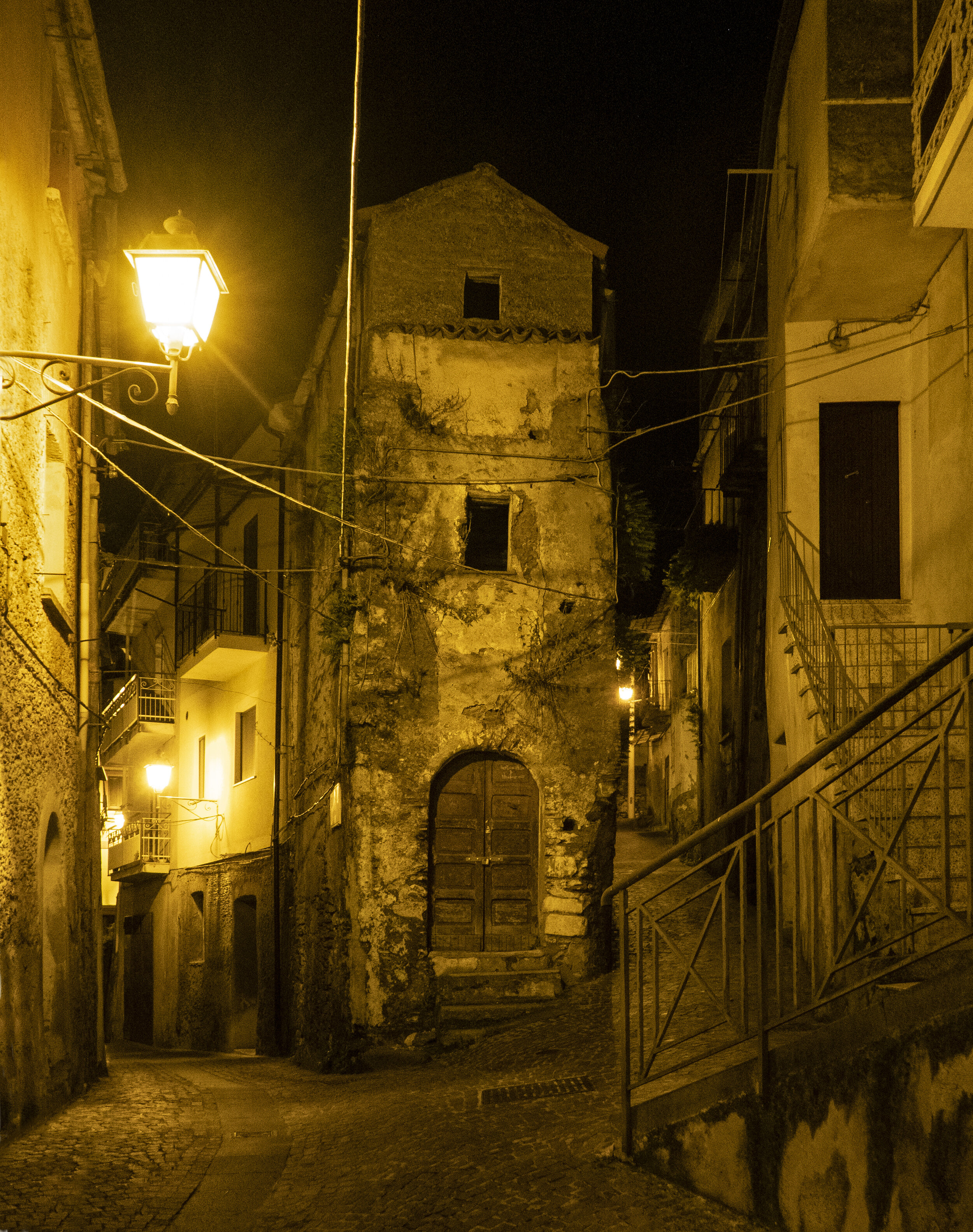
And so we left Tropea and were back on the narrow streets of Nicastro and headed for San Teodoro Chiesa, as now we knew exactly where it was.
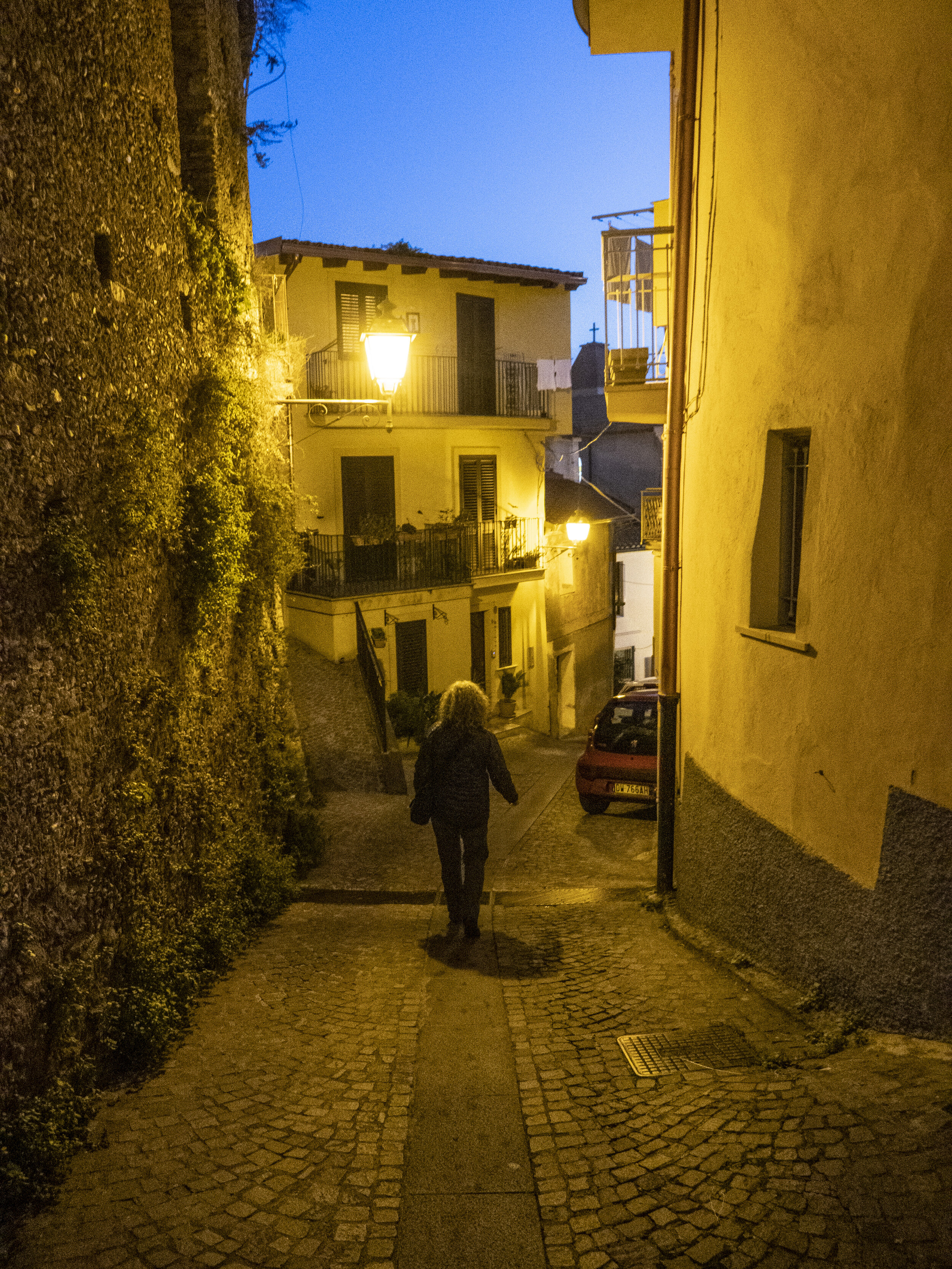
With Louise leading the way for the 5:00 p.m. mass at San Teodoro and me, as usual, lagging behind taking photos with this wondrous early evening light.
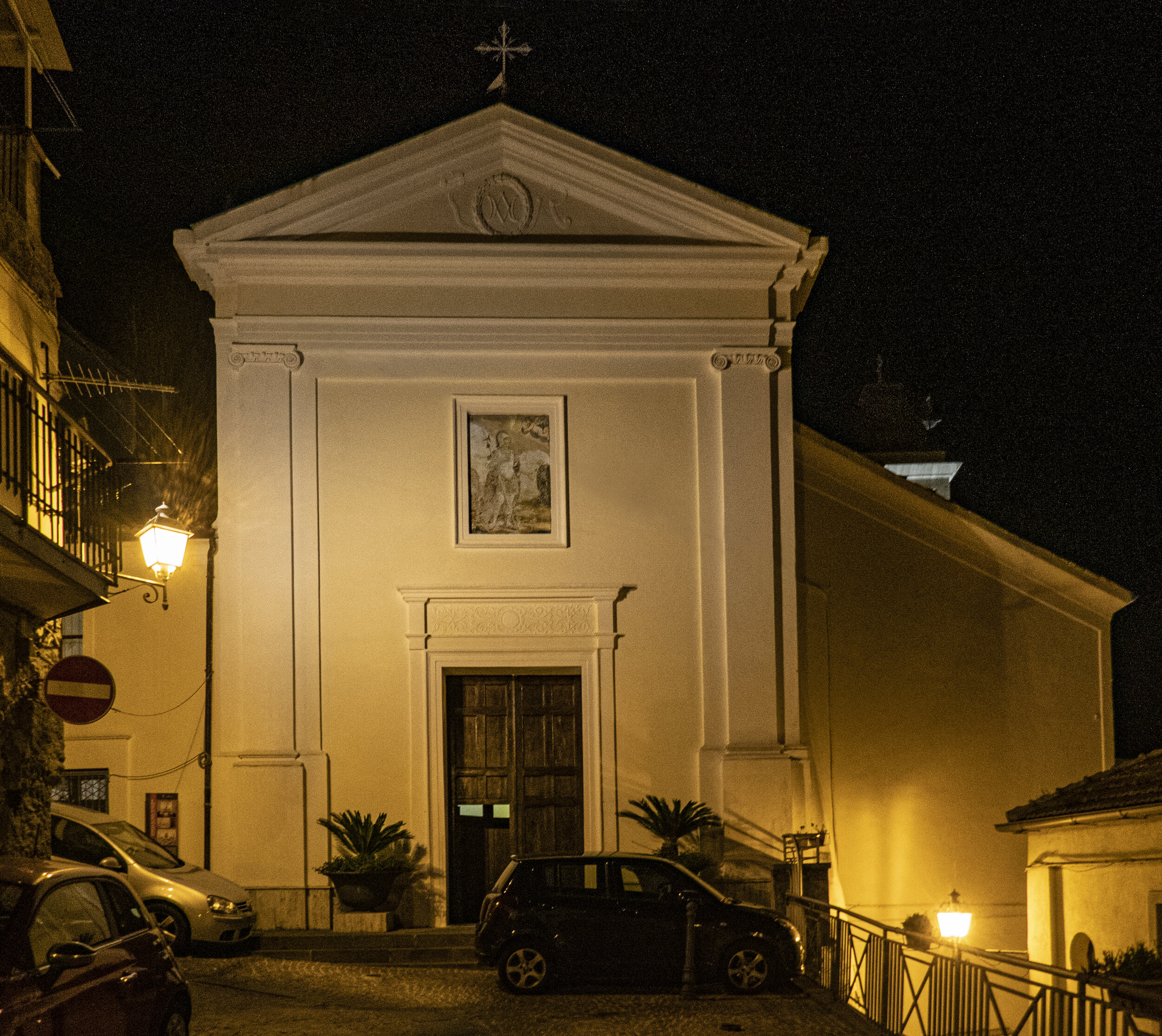
Evening at San Teodoro Chiesa, Nicastro, Catanzaro, Italy.
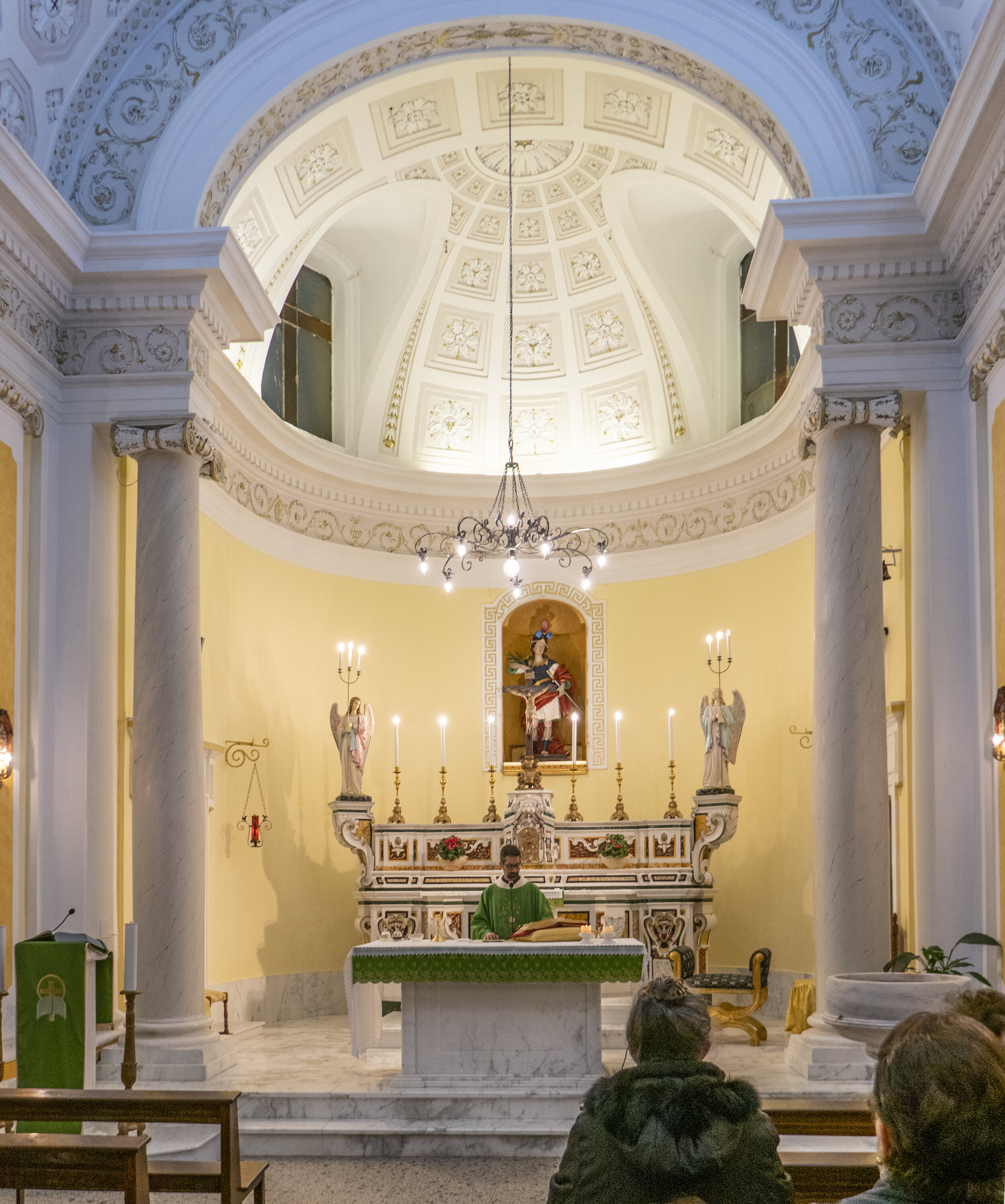
Father Giuseppe Critelli saying mass for nine women dressed in black and one nun in grey..... and Louise and me.

Transubstantiation - changing bread into the body of Christ and (Catholics believe) the risen Jesus becomes truly present in the Eucharist.

After mass I introduced myself to Father Critelli and explained my search for information. He brought us the Church office where the women had already gathered, as they were curious,
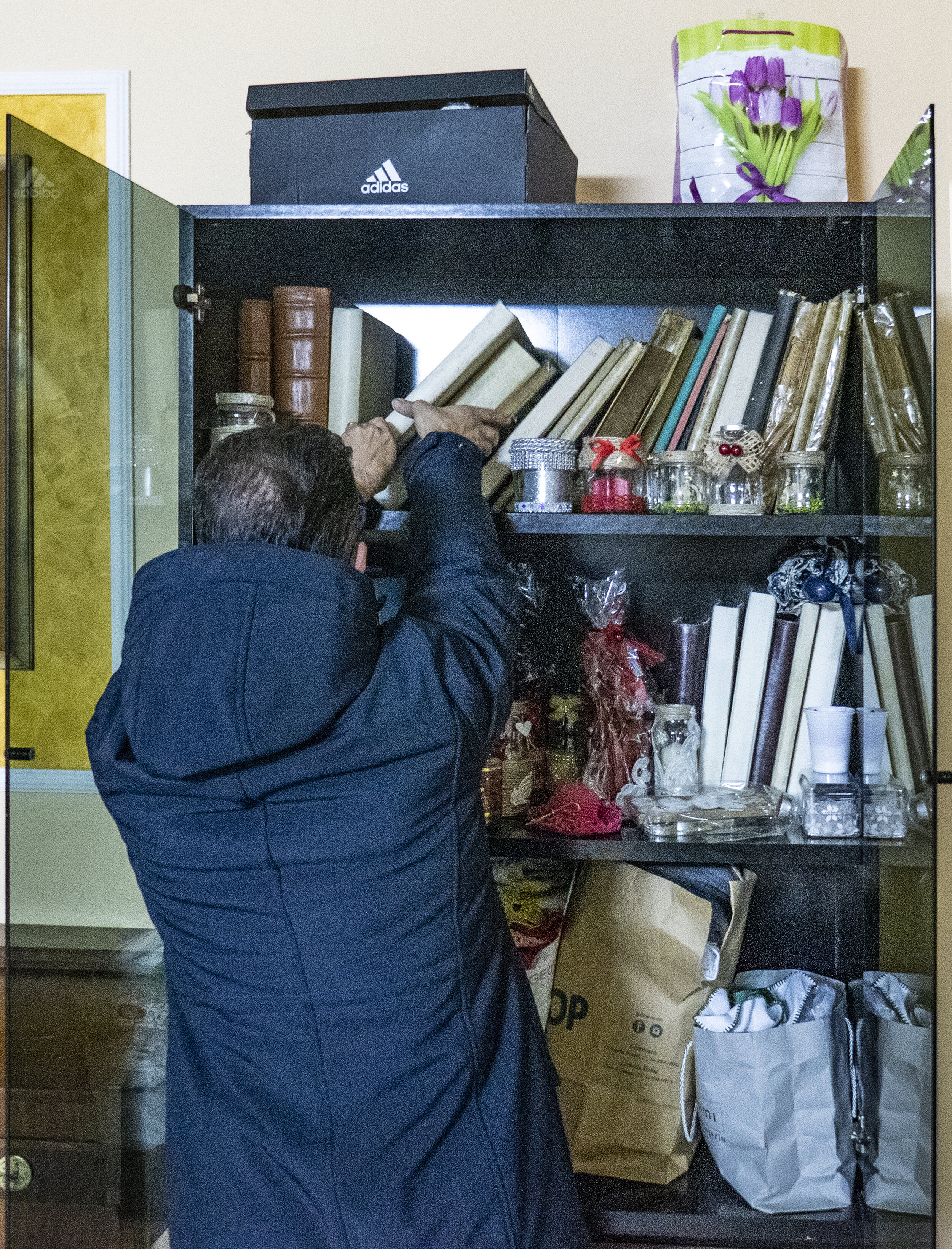
Father Giuseppe retrieves the books containing records of parishioners of the past.
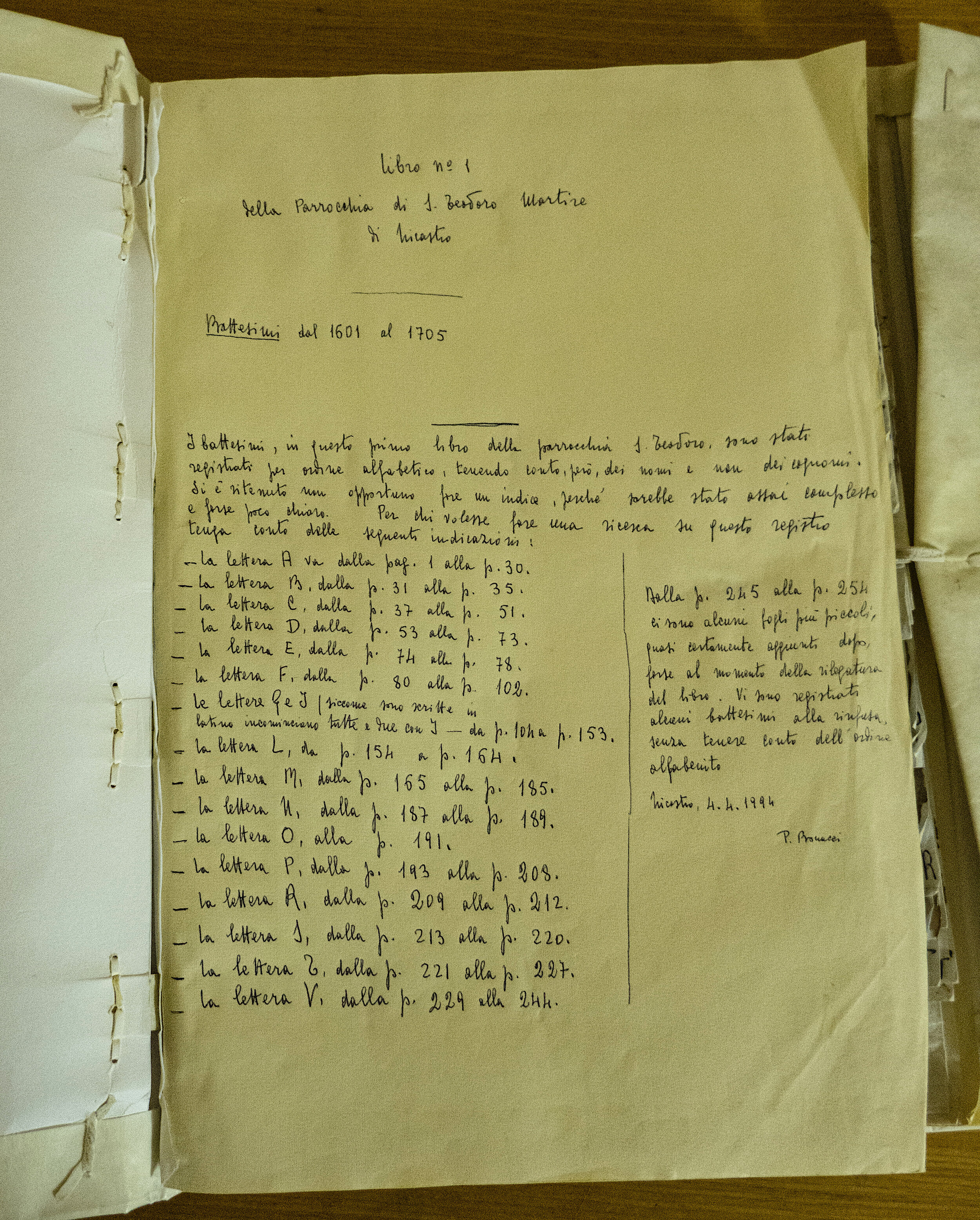
The preface in Libro No 1 - Book number 1 - della Parrocchia di Nicastro San Teodoro states its entries span from the year 1601 to 1705.
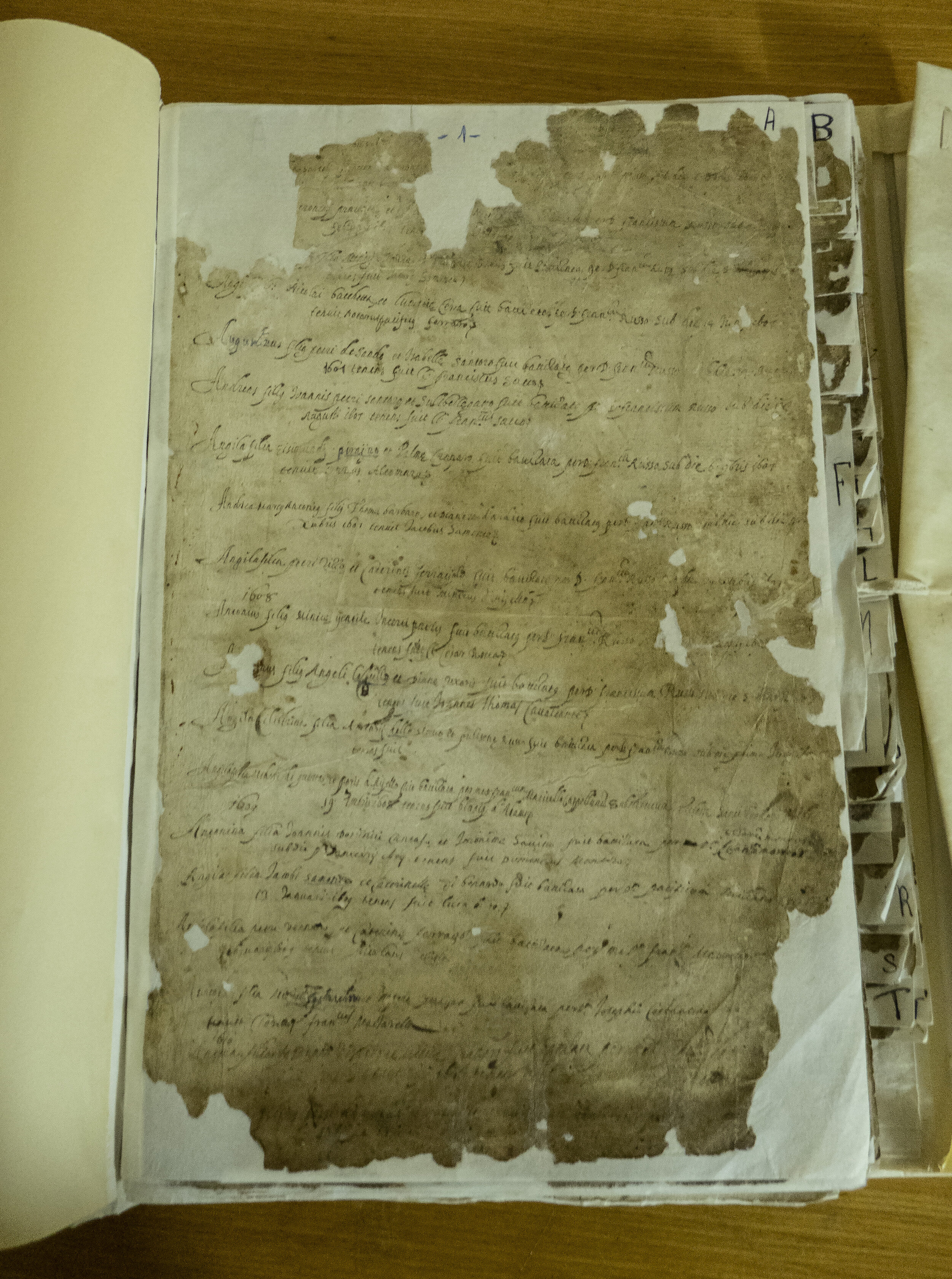
An actual page with records from 1601 of parishoners' events at San Teodoro.
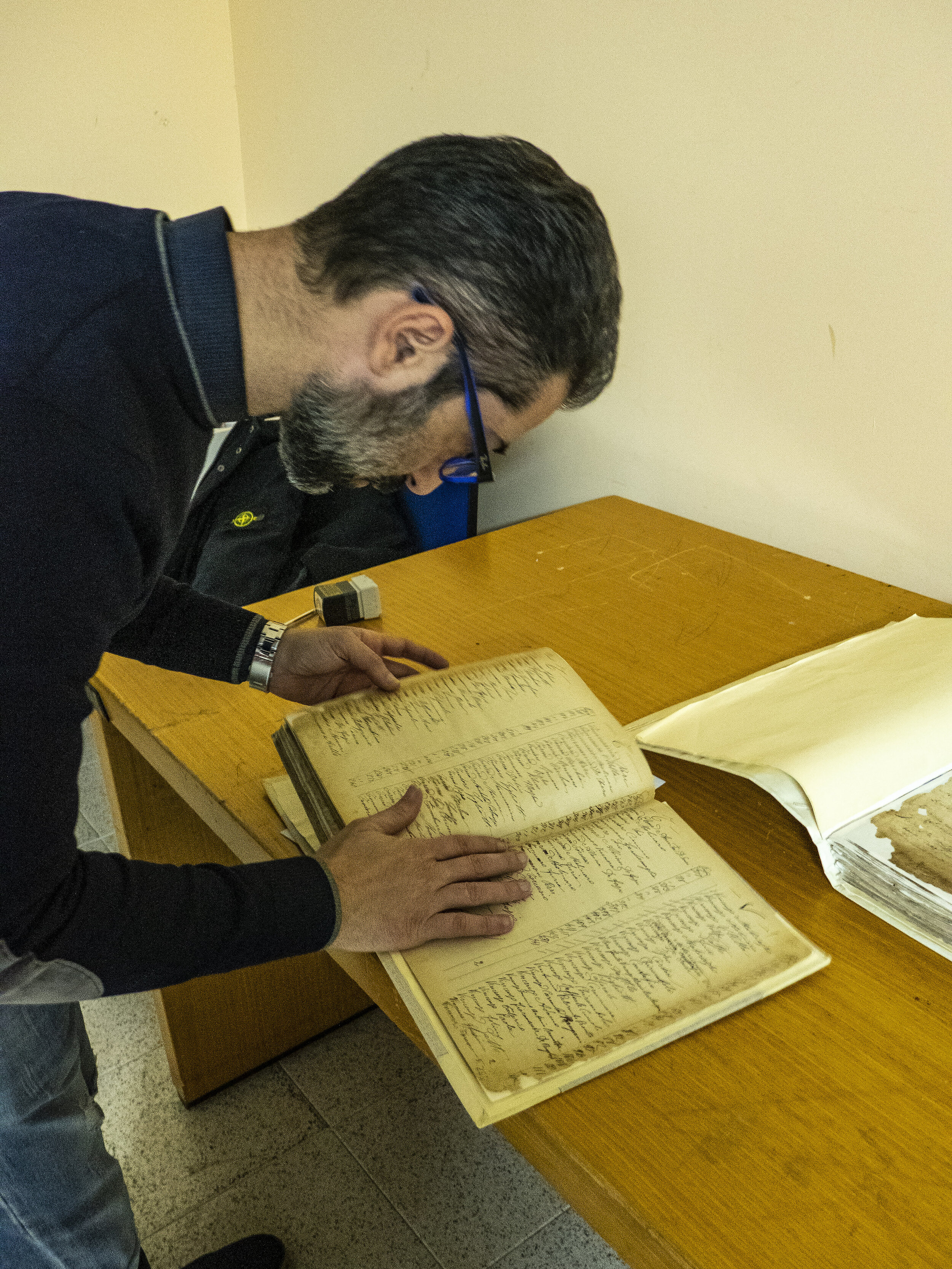
Father Giuseppe looking through the record books for Giovannina's birth or baptism records.
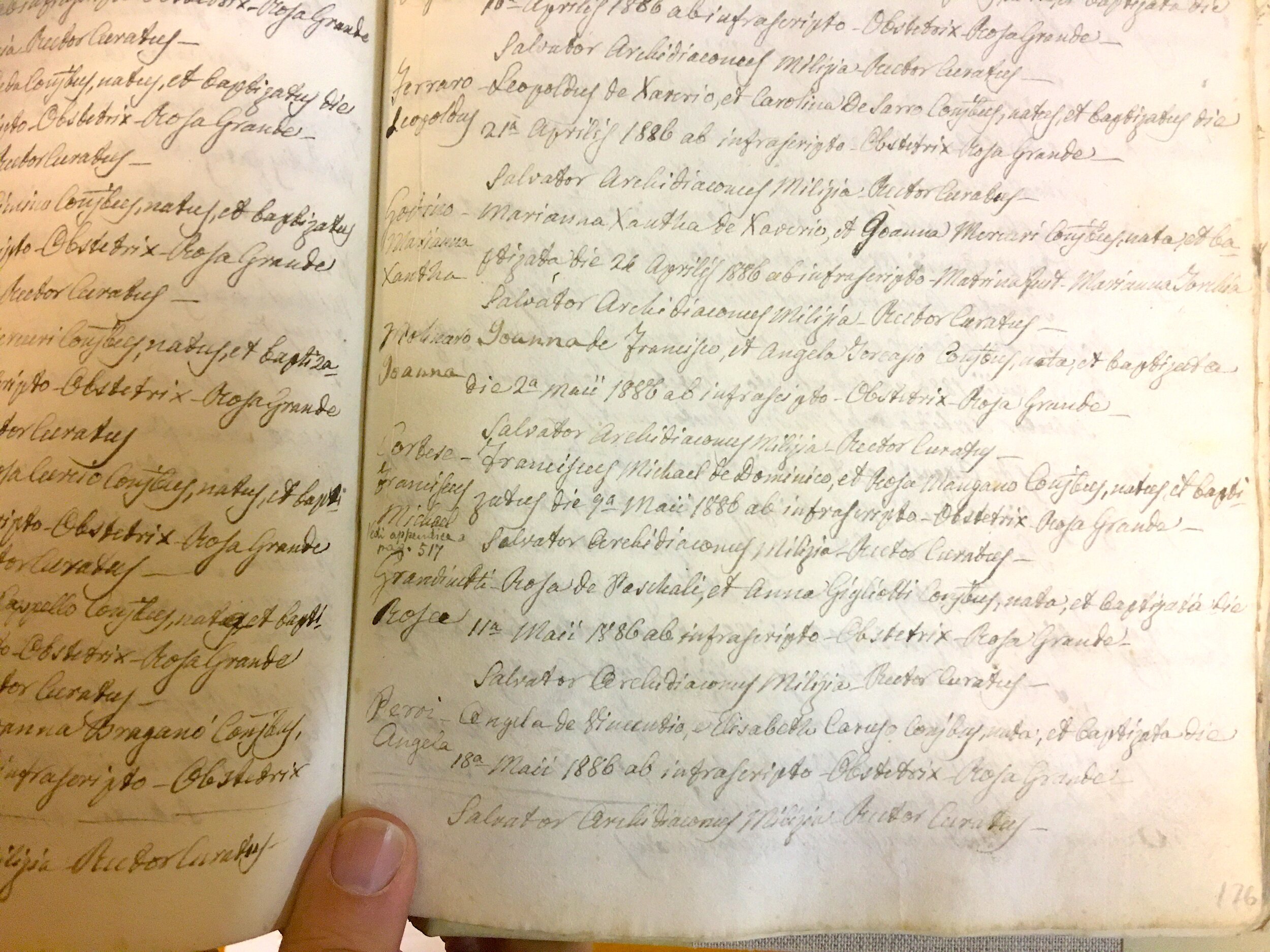
Finally, Father Giuseppe found the entry of my maternal grandmother's baptism. Incredible!!!
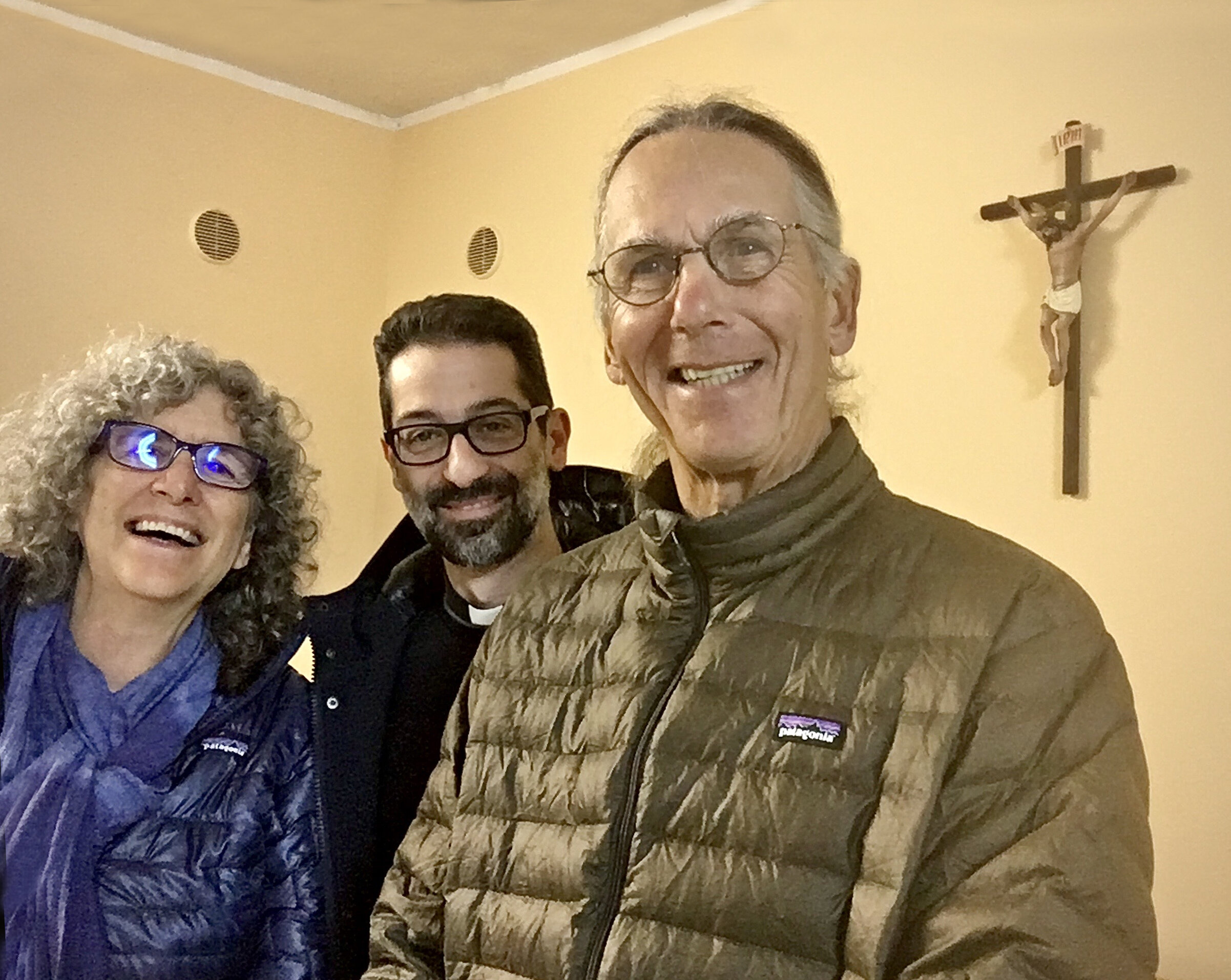
As was Father Vittorio of San Nicola/Santa Lucia Chiesa, Father Giuseppe was a wonderfully kind, gentle, accessible and caring individual.
PrevNext